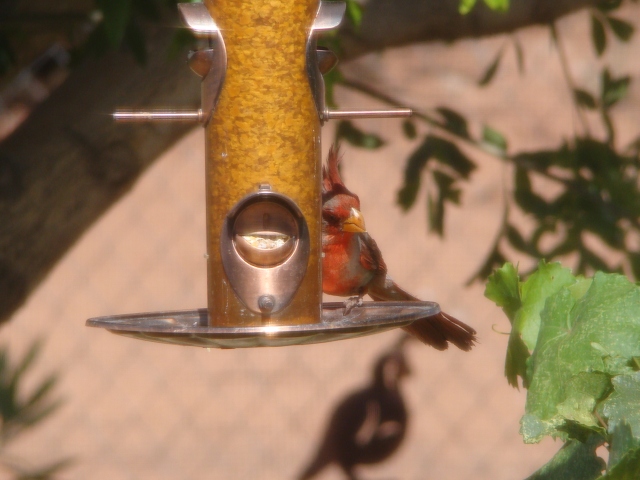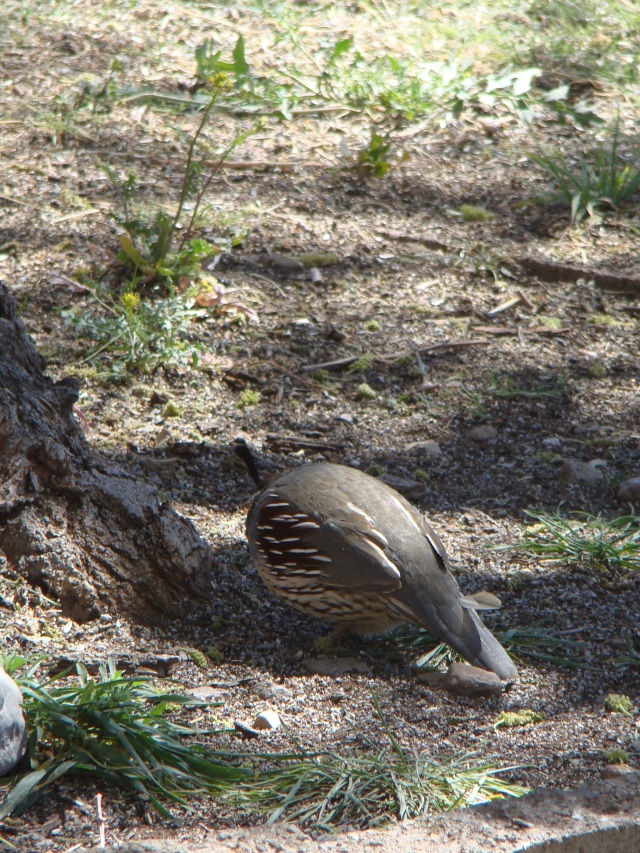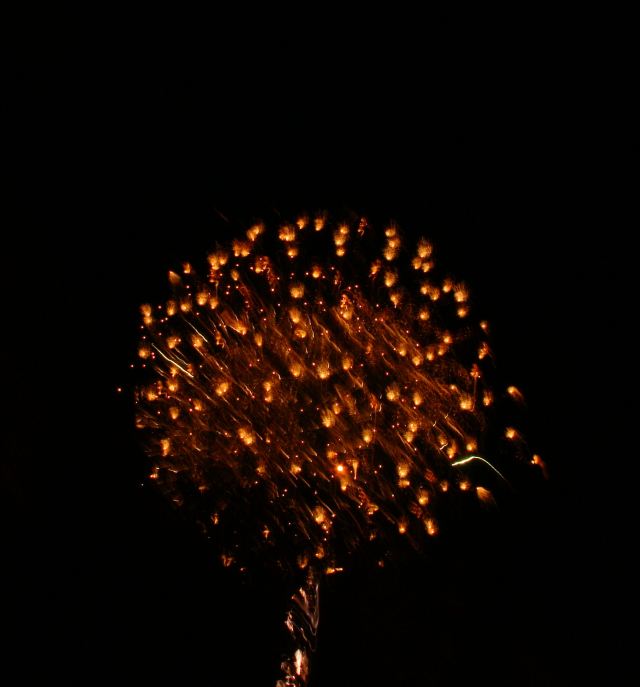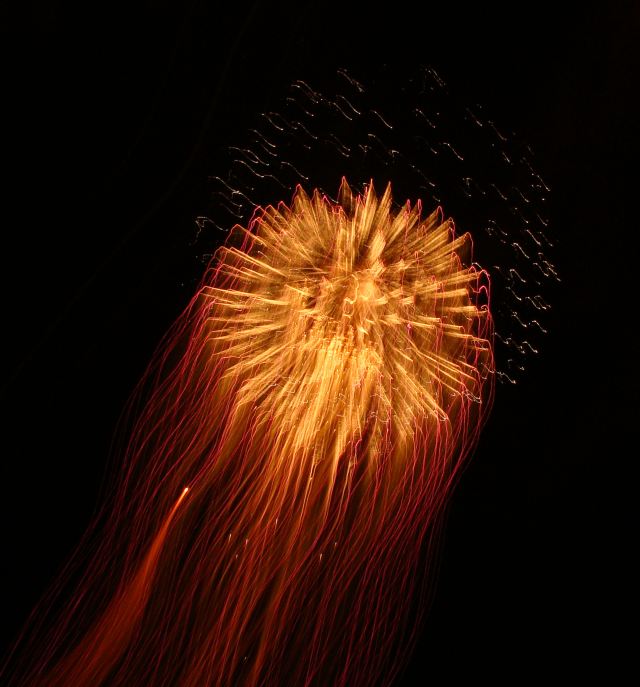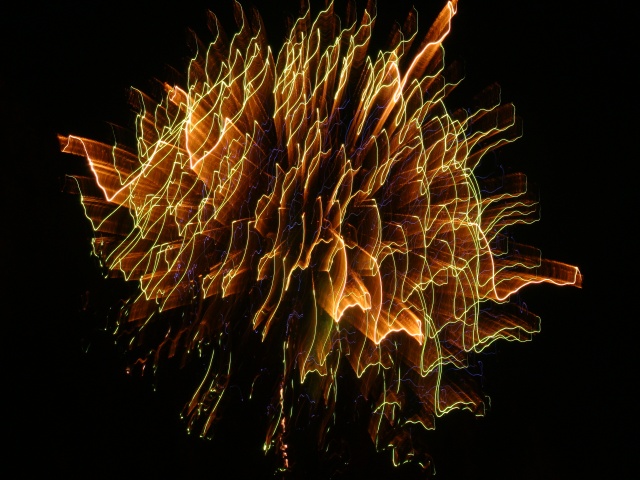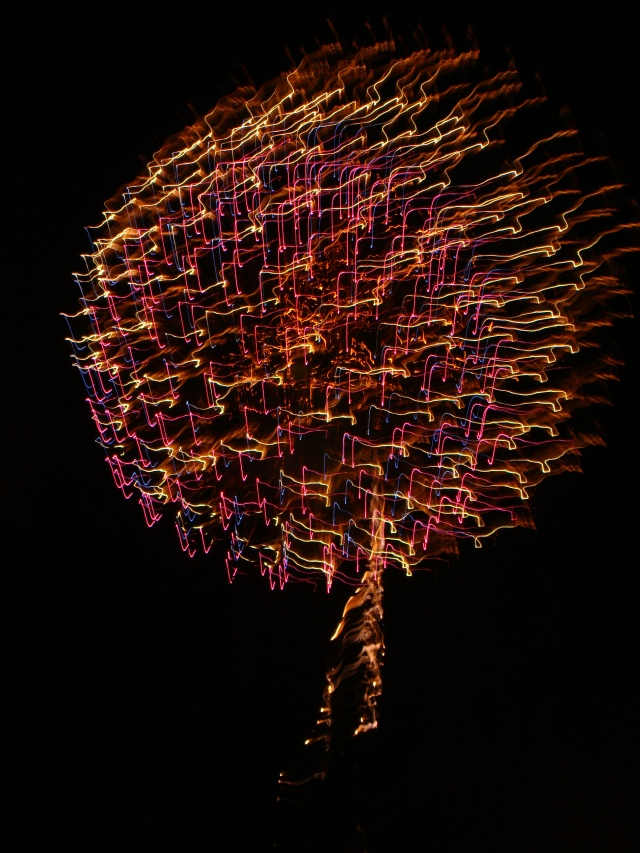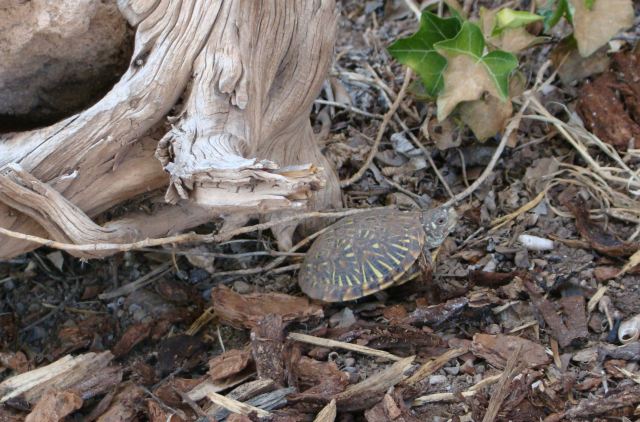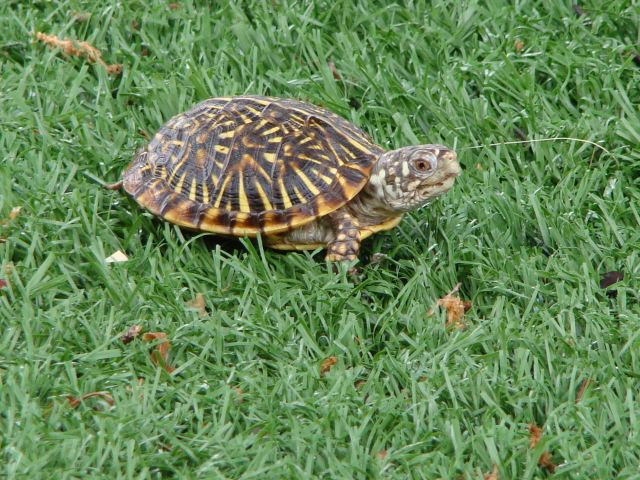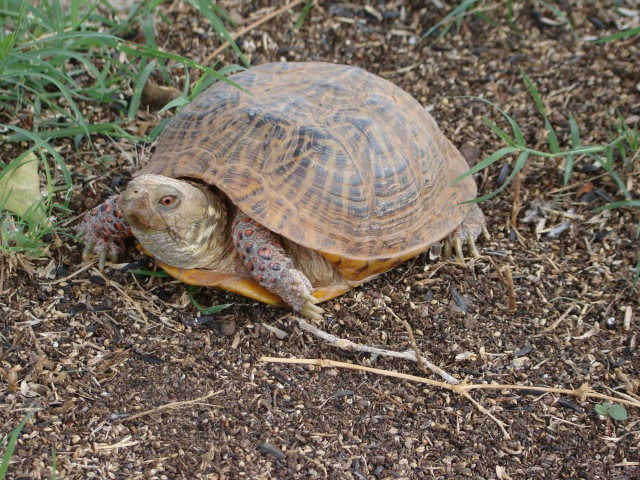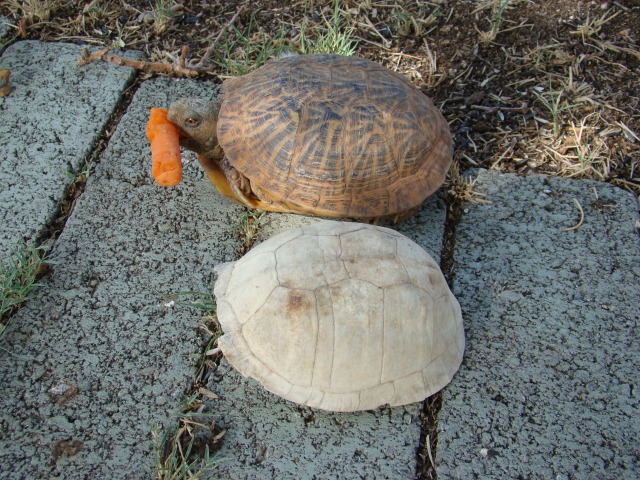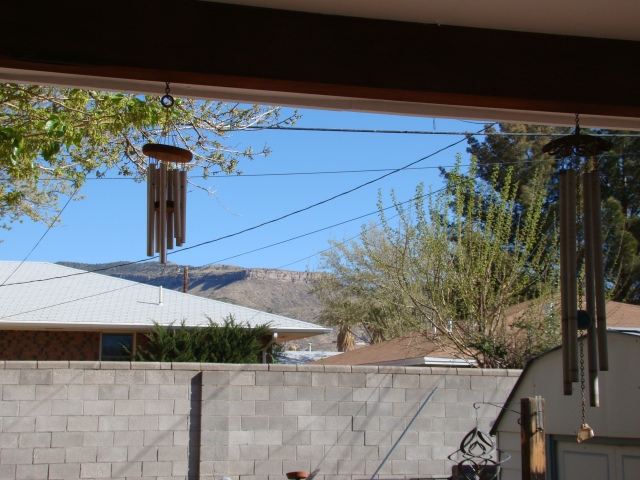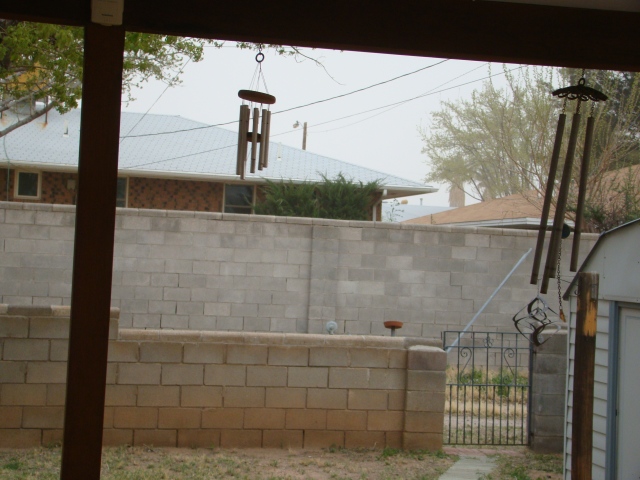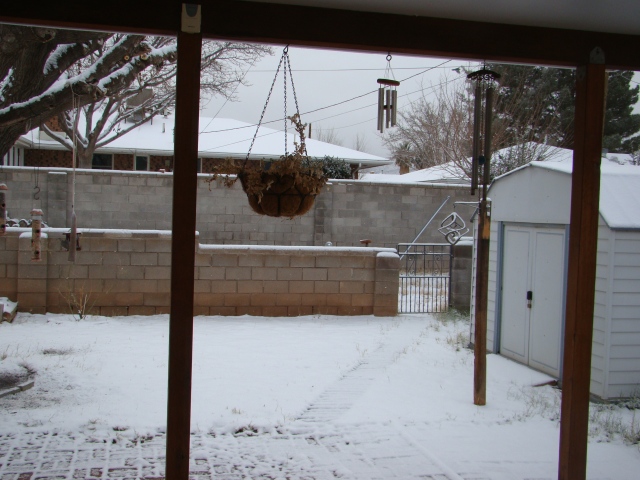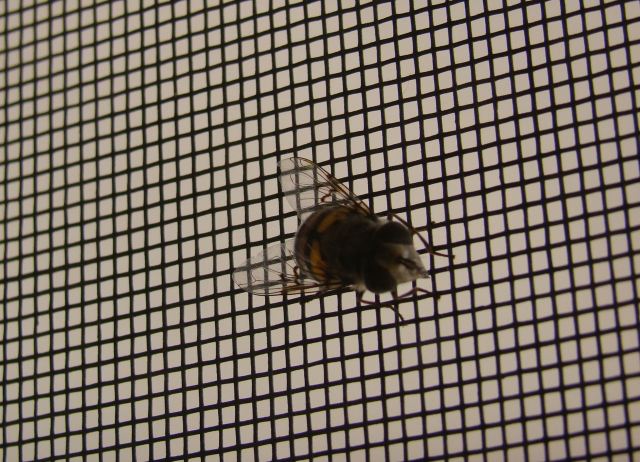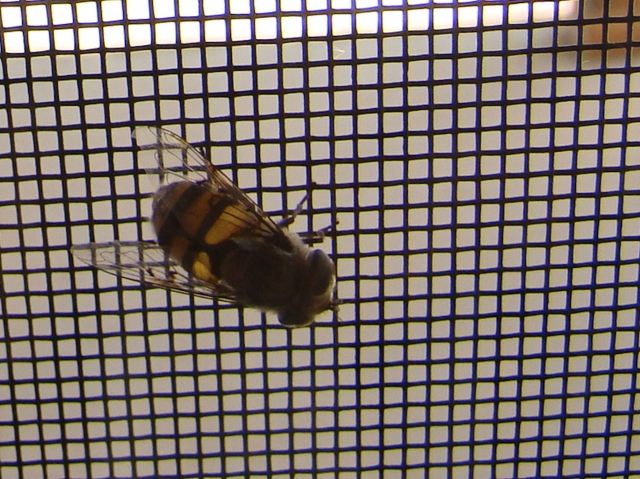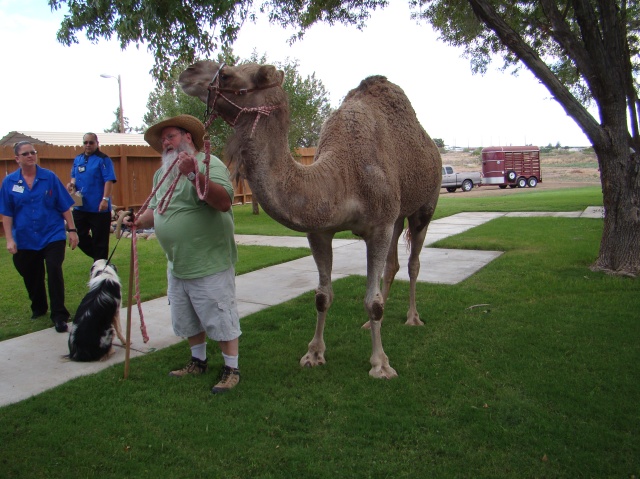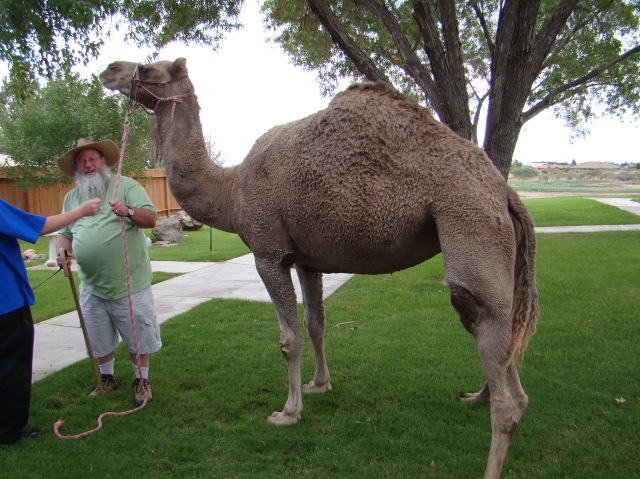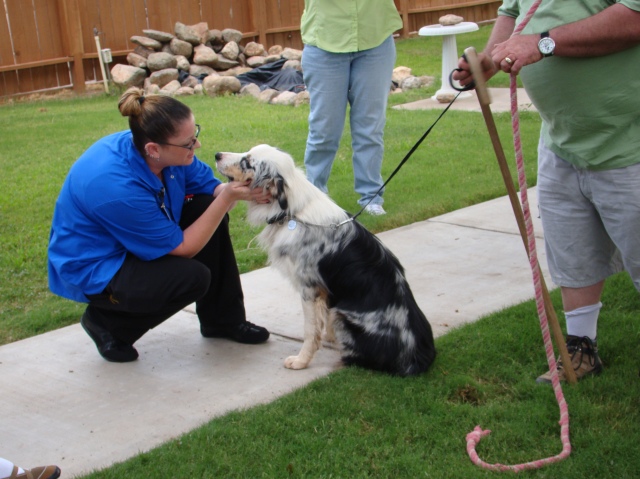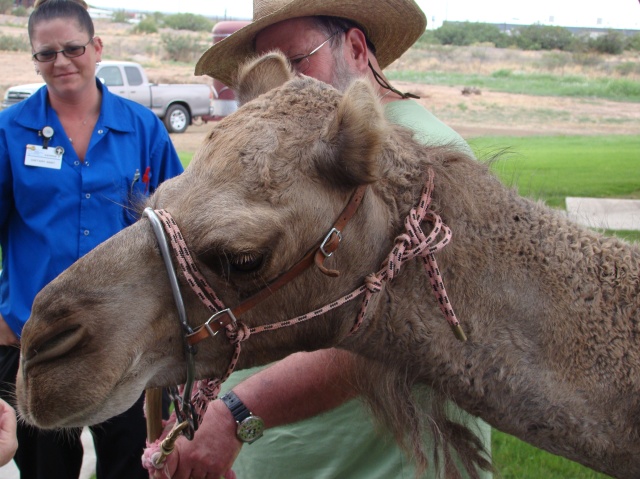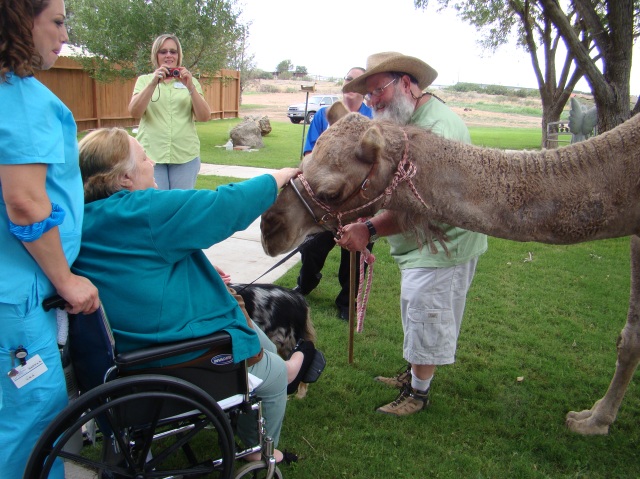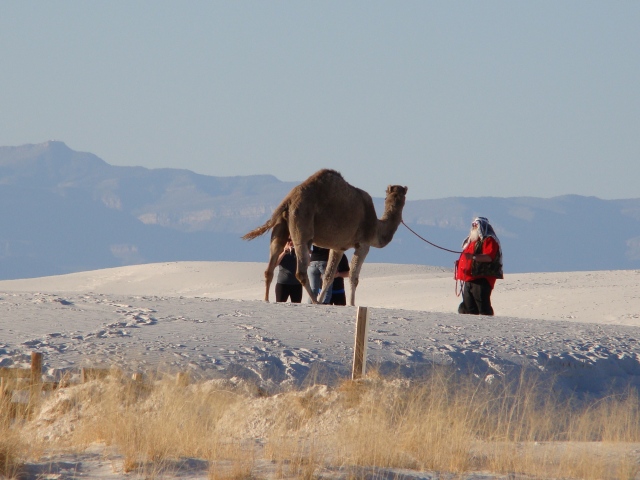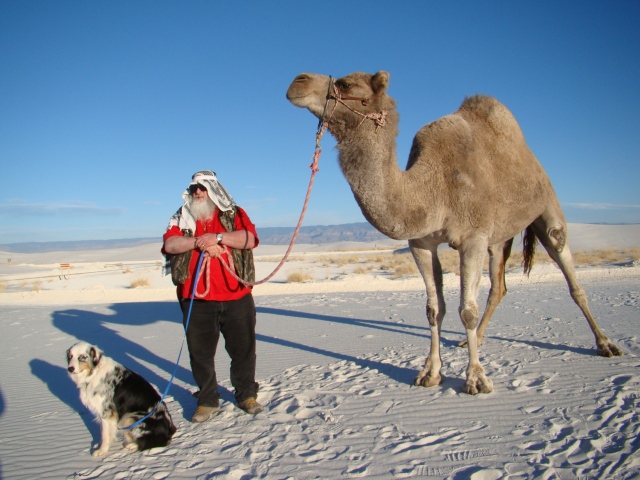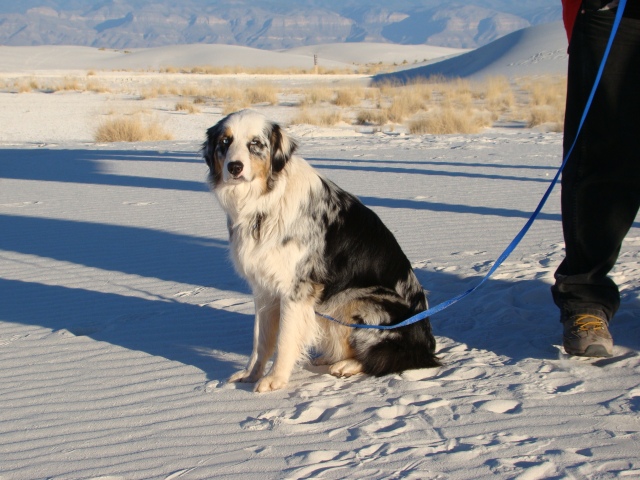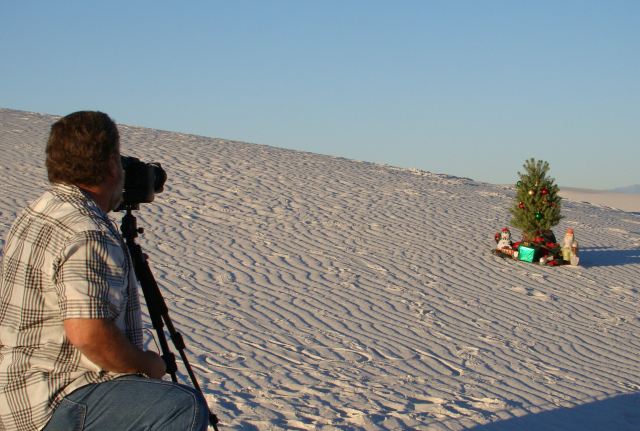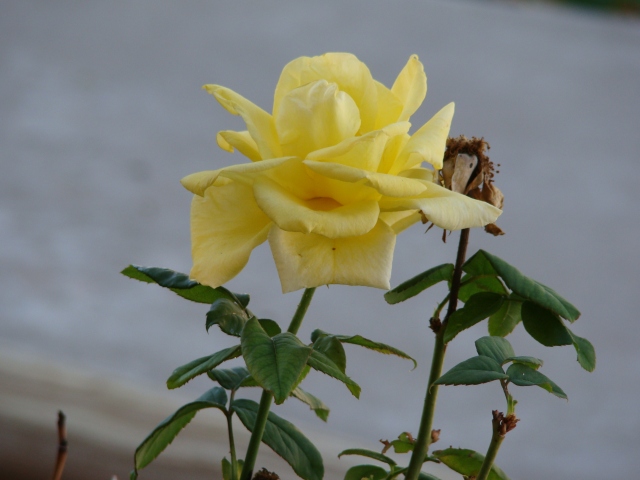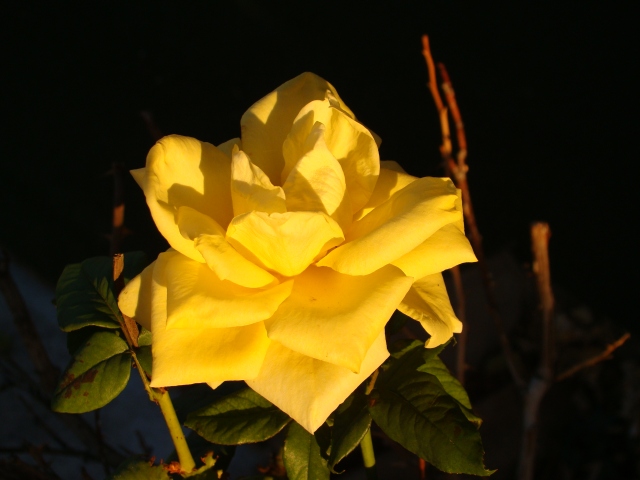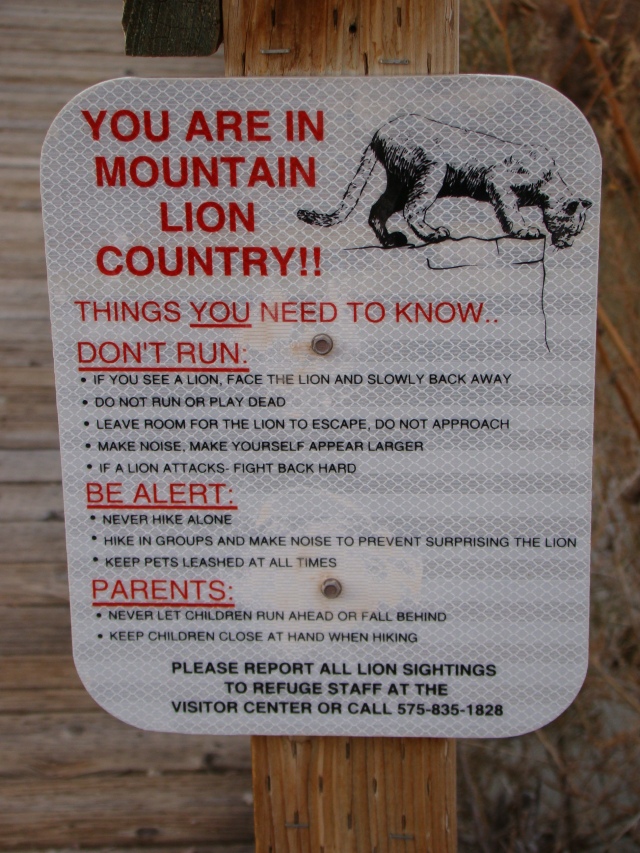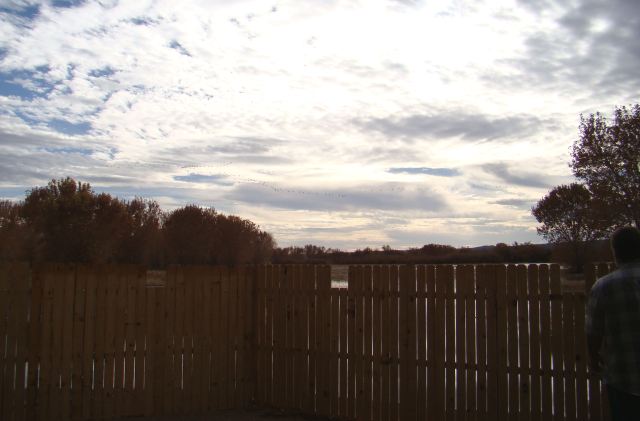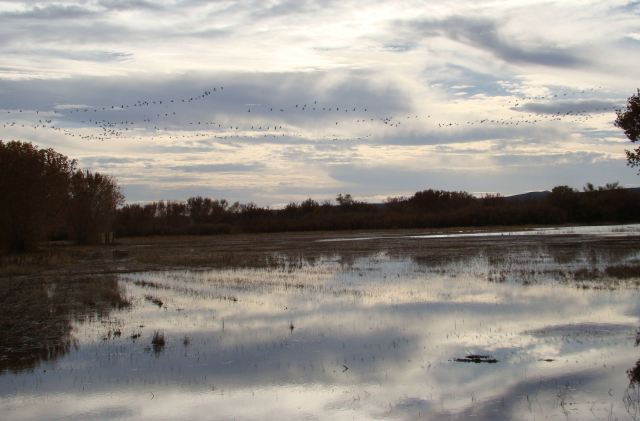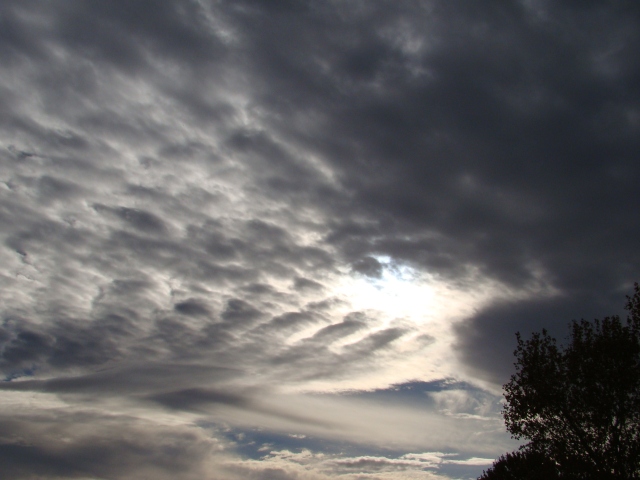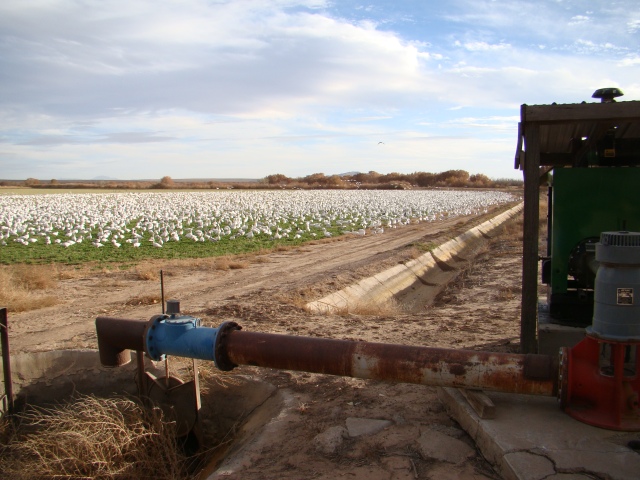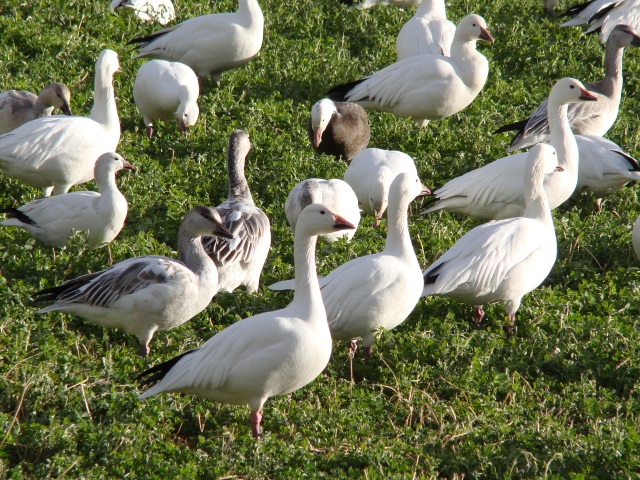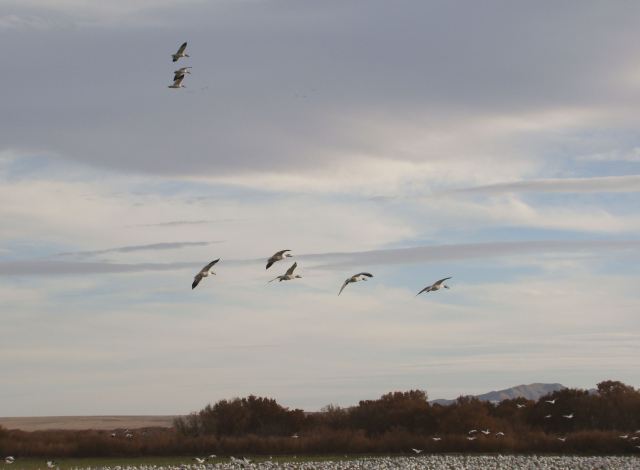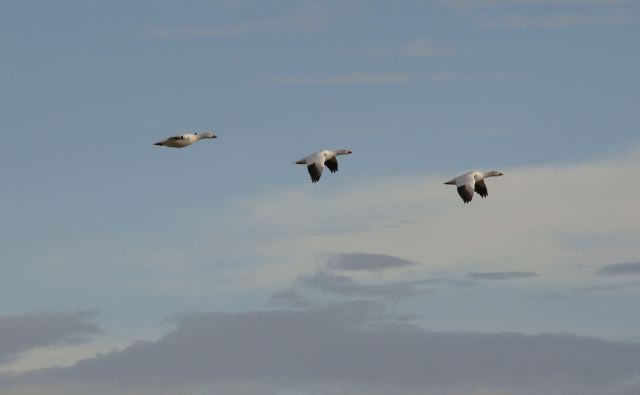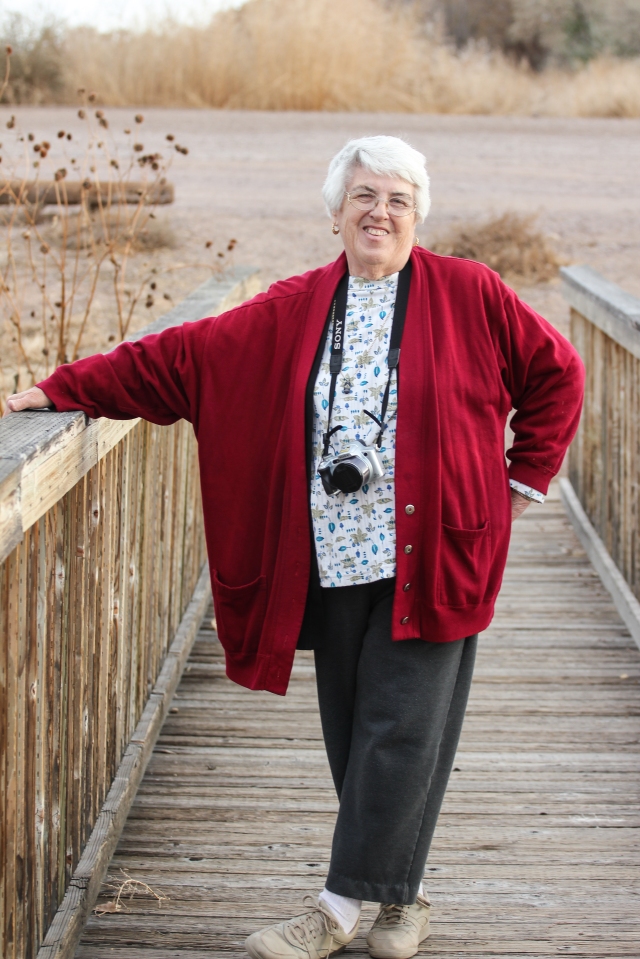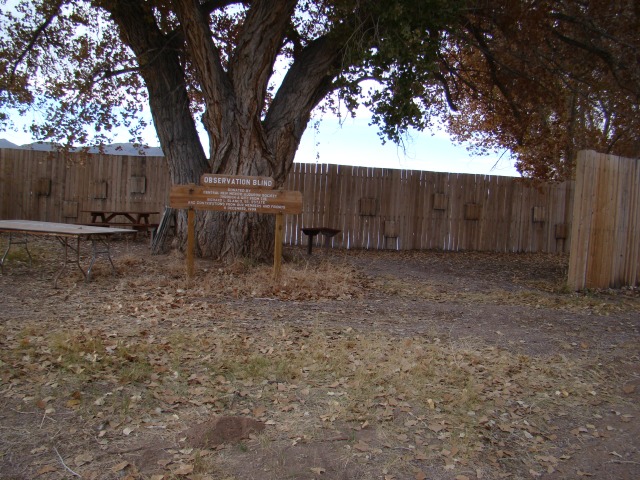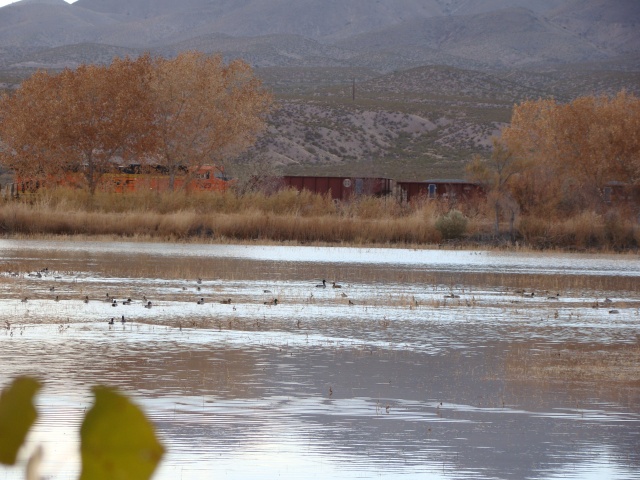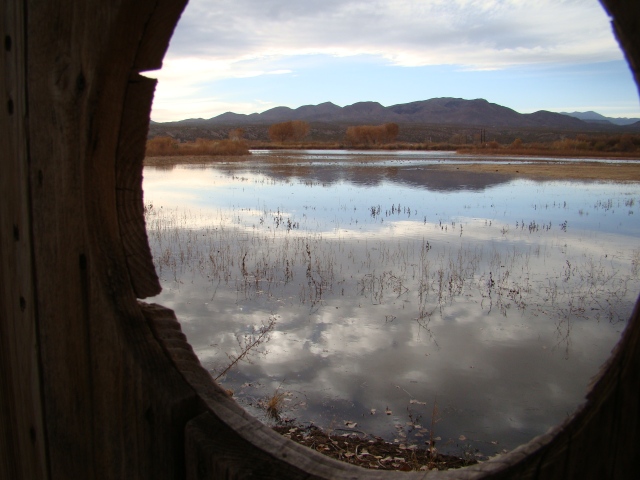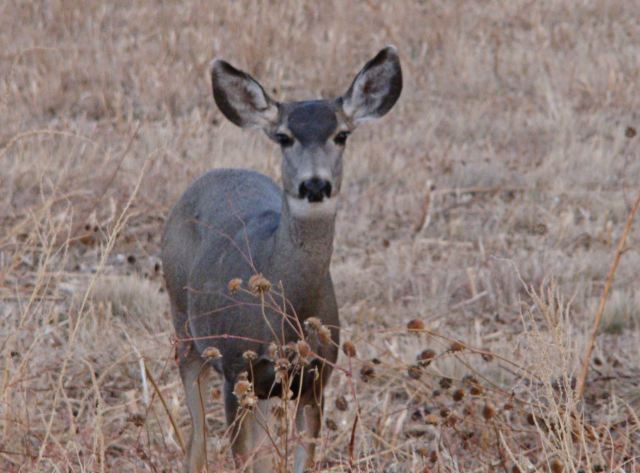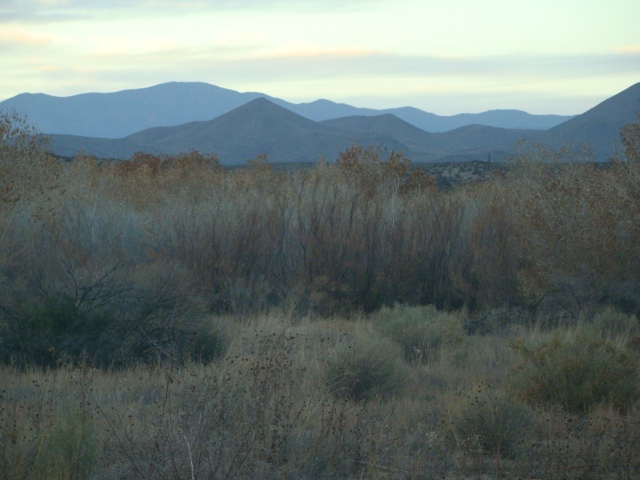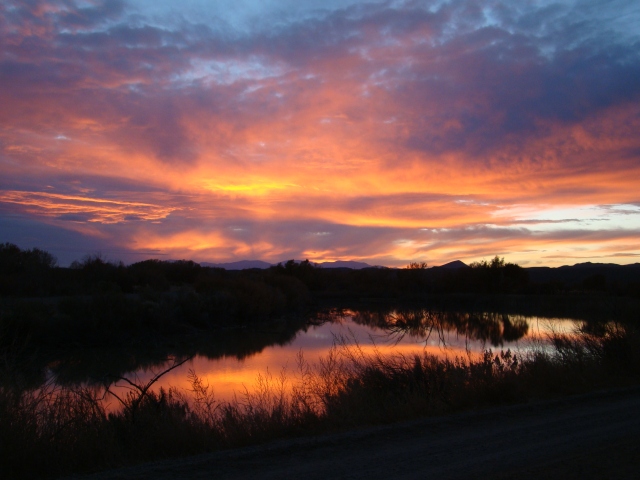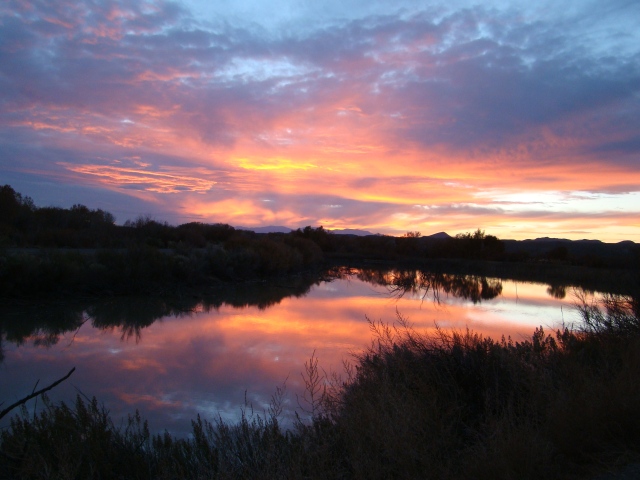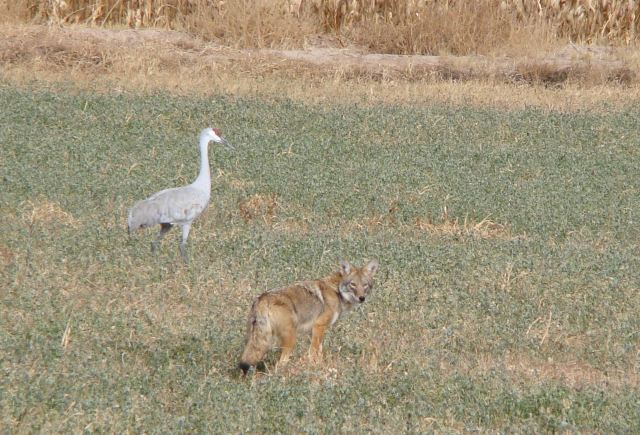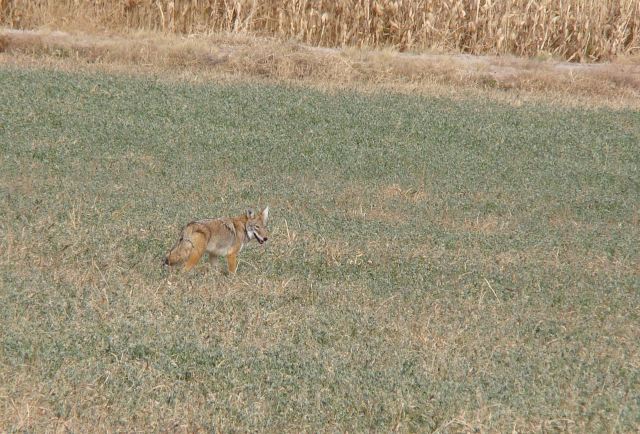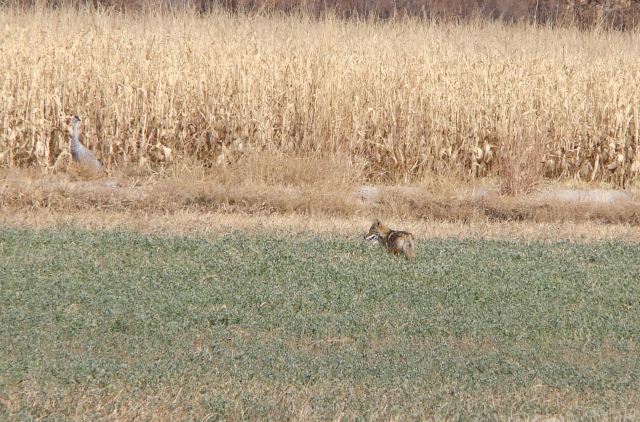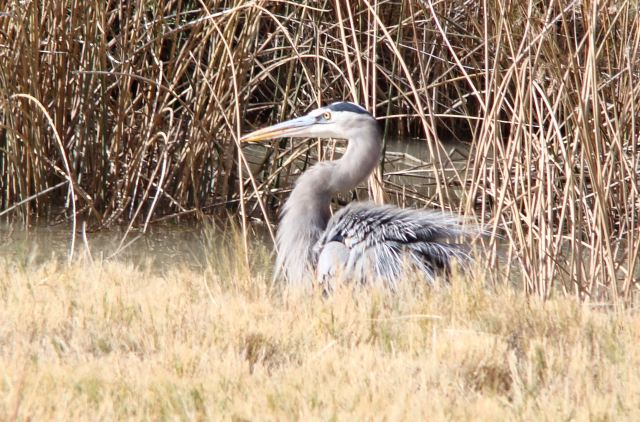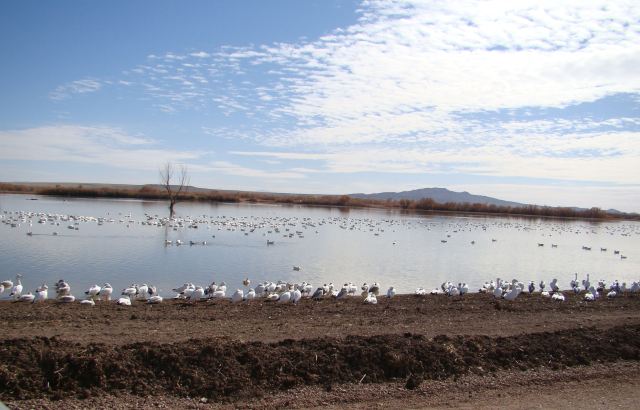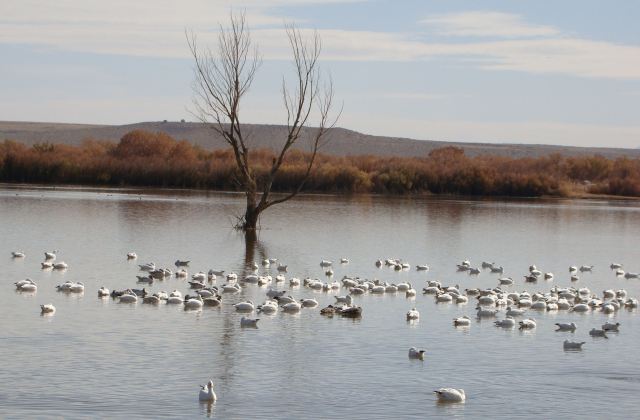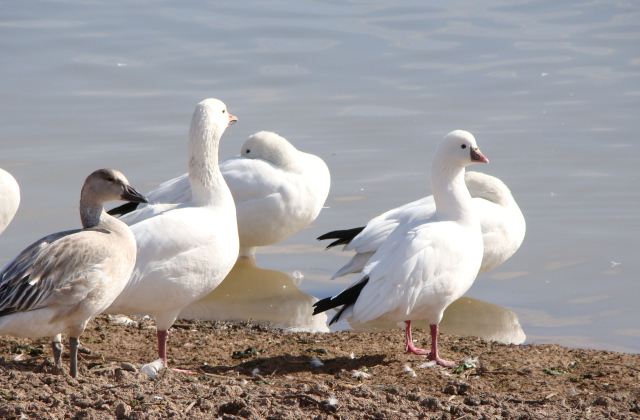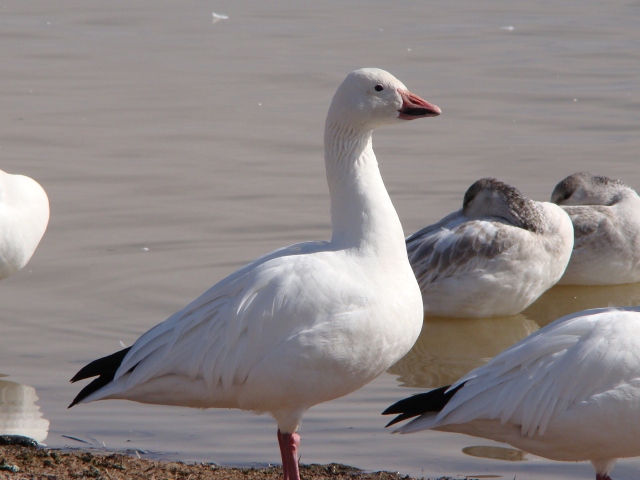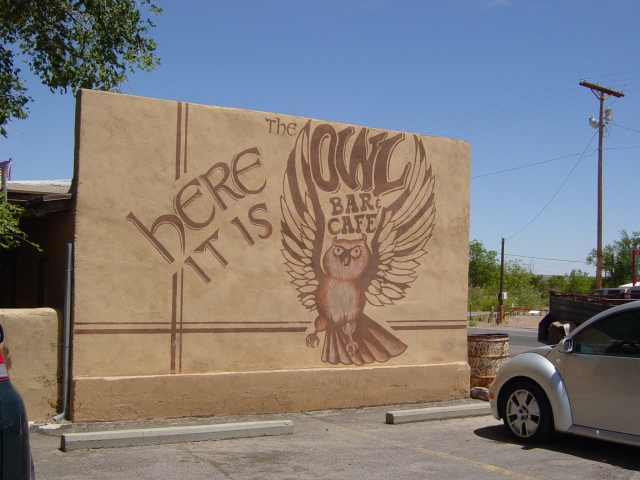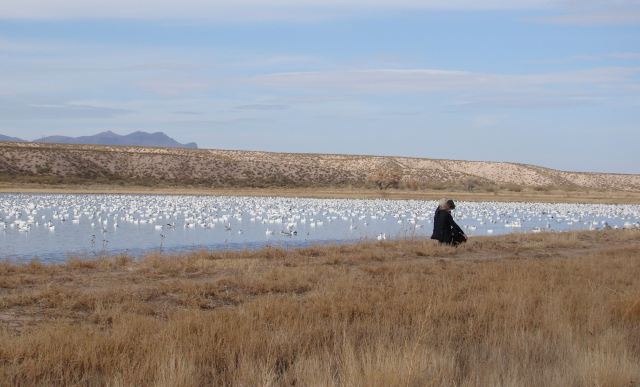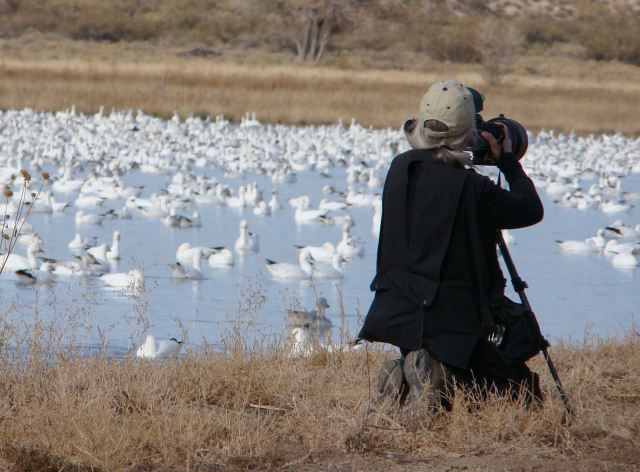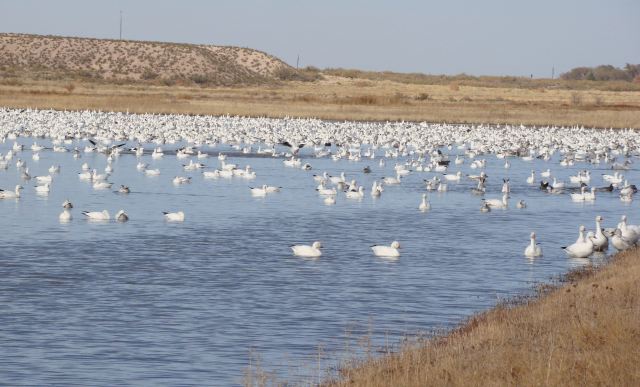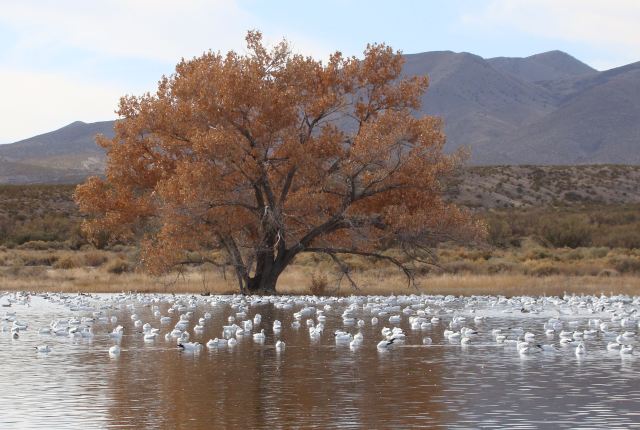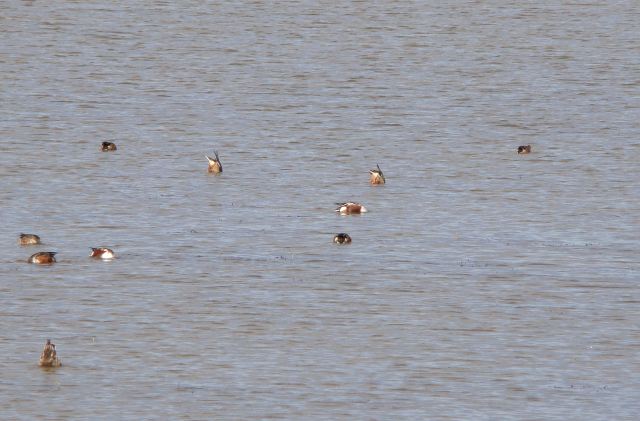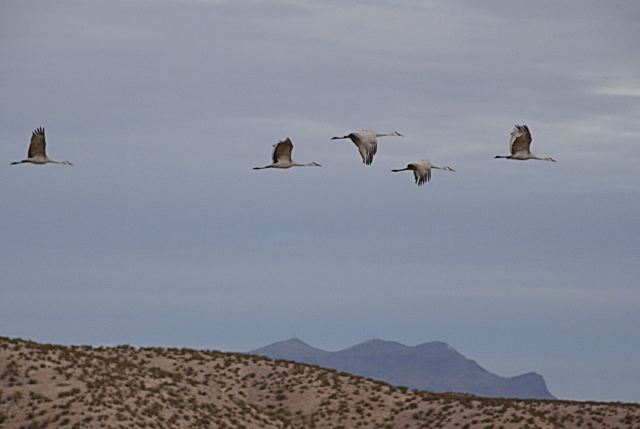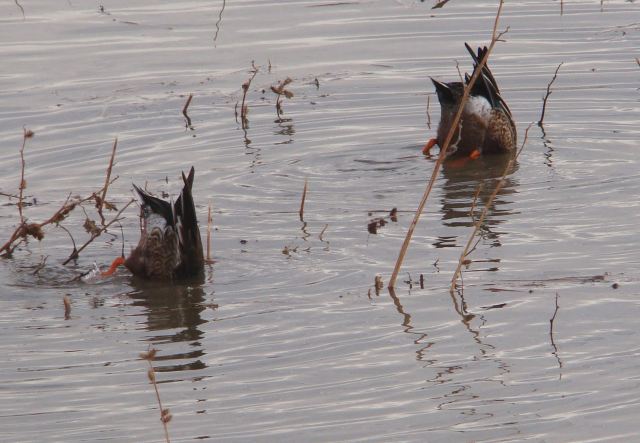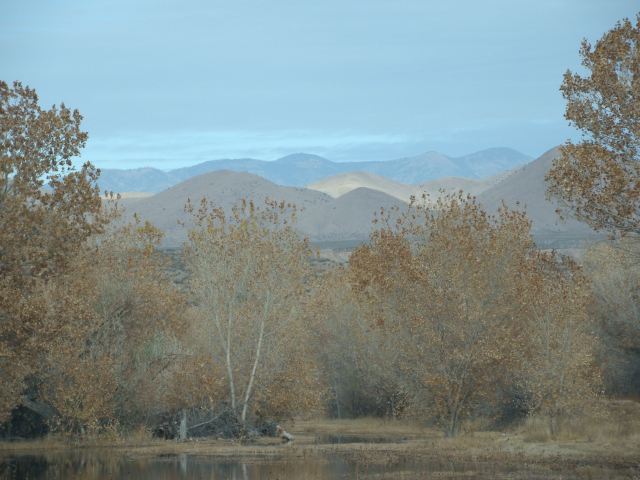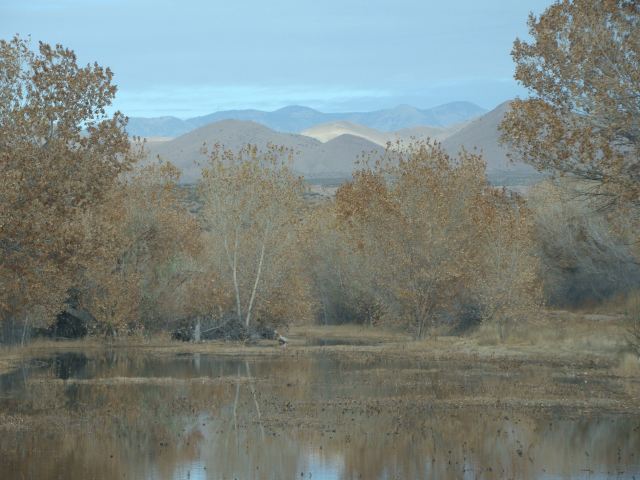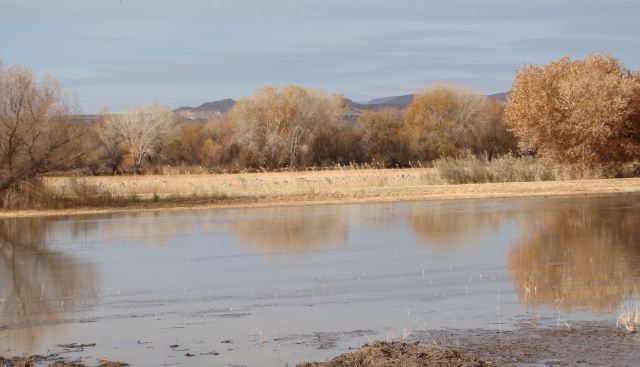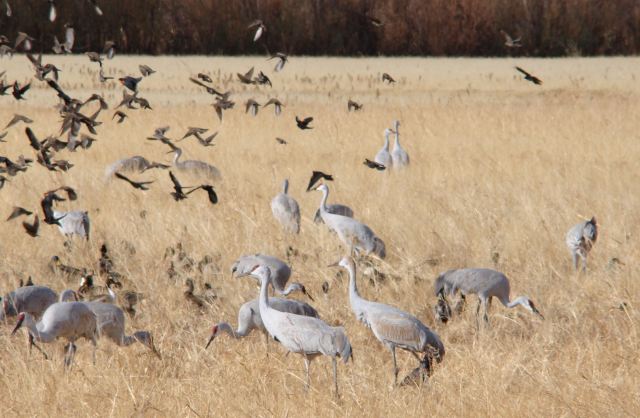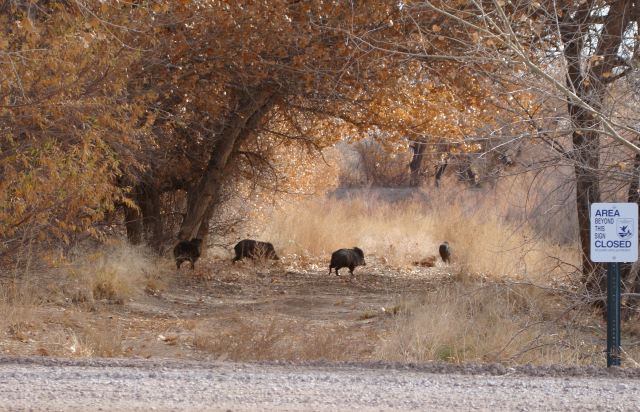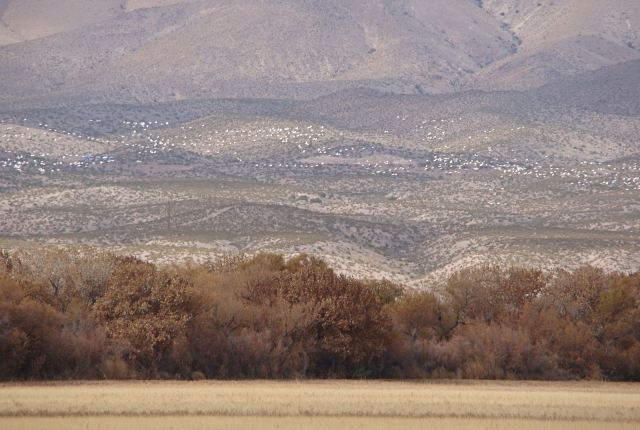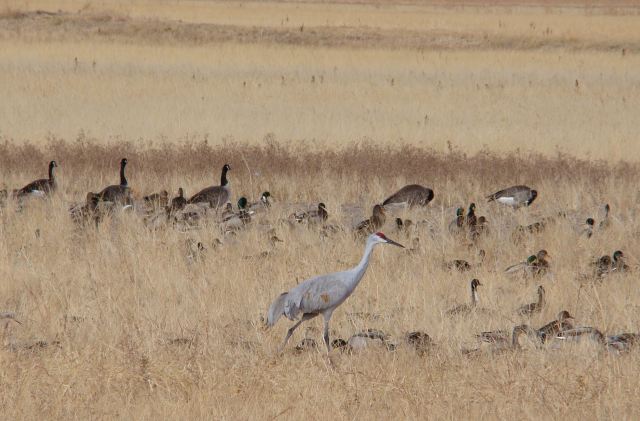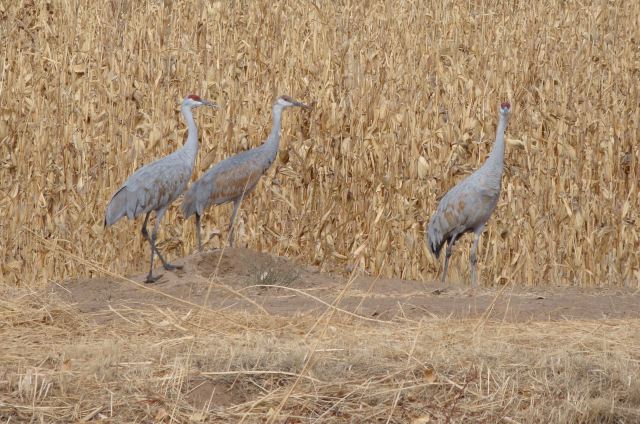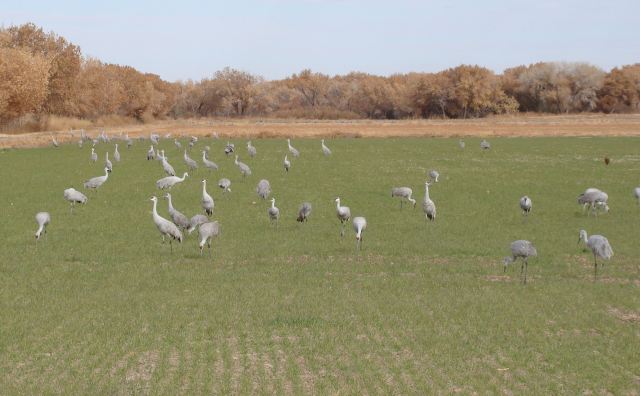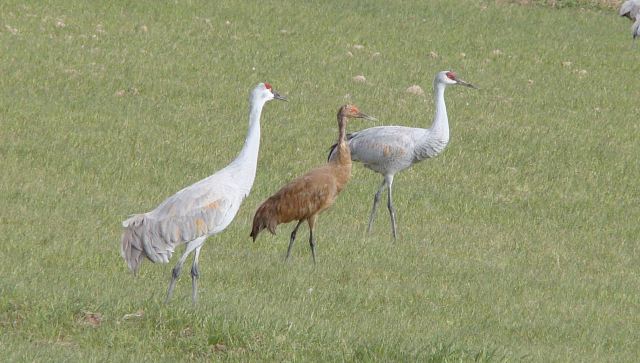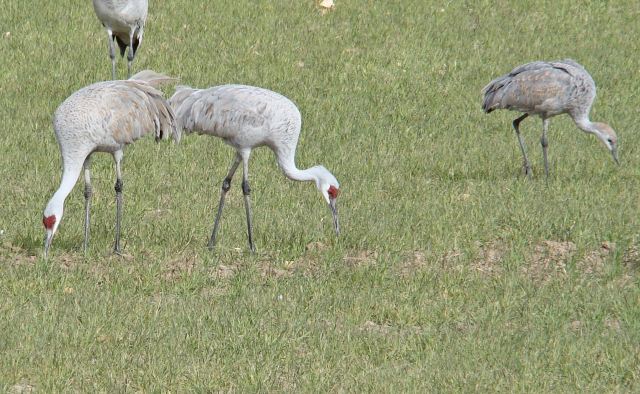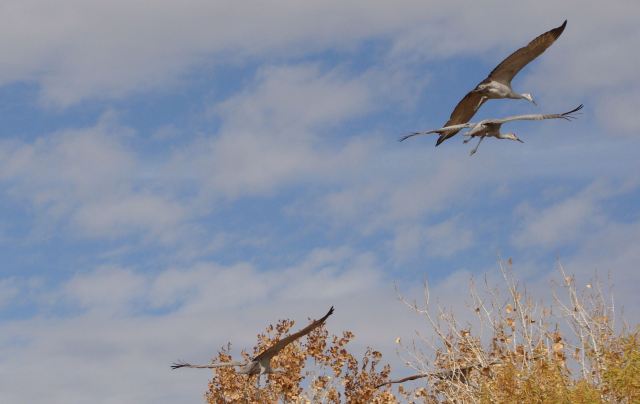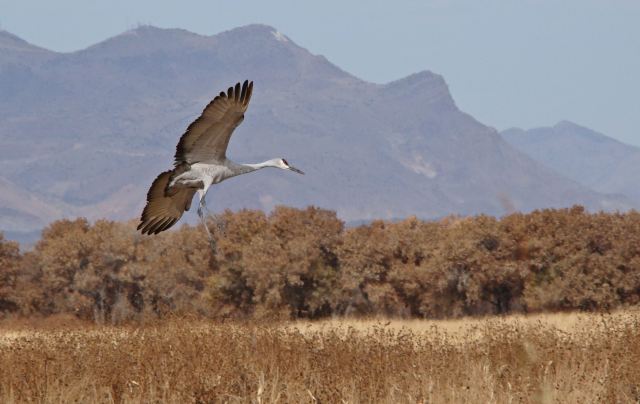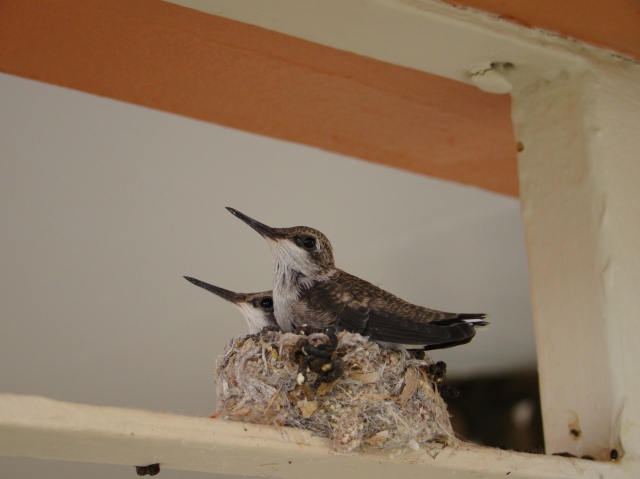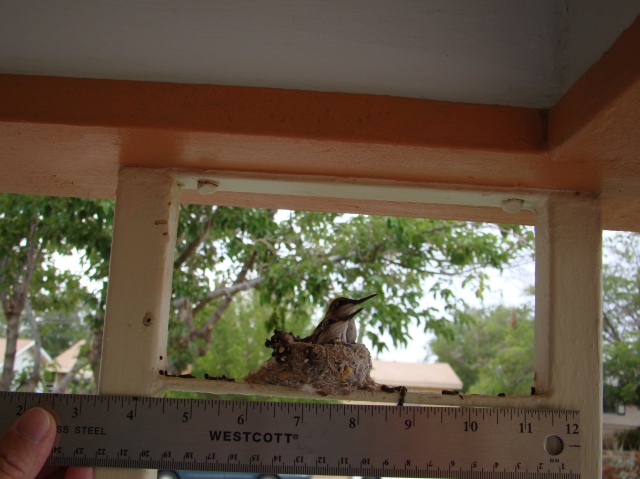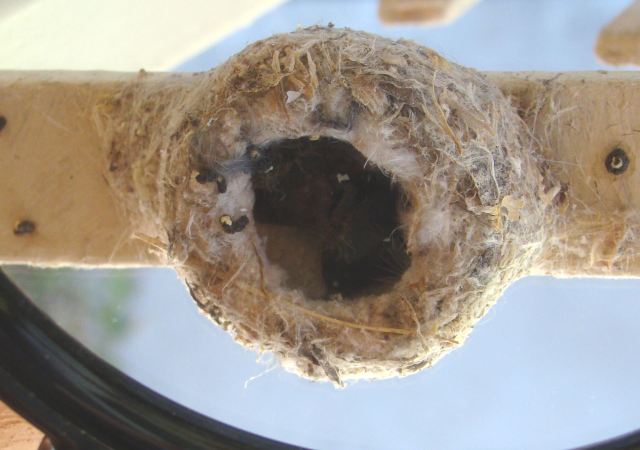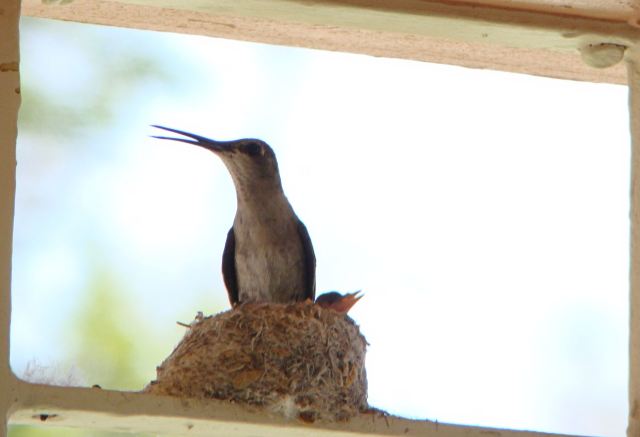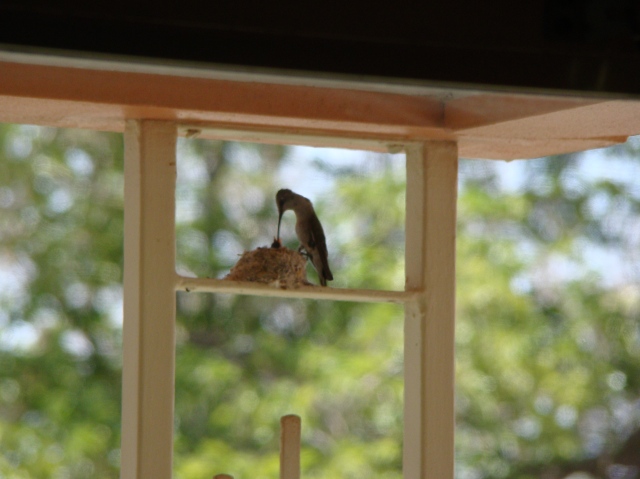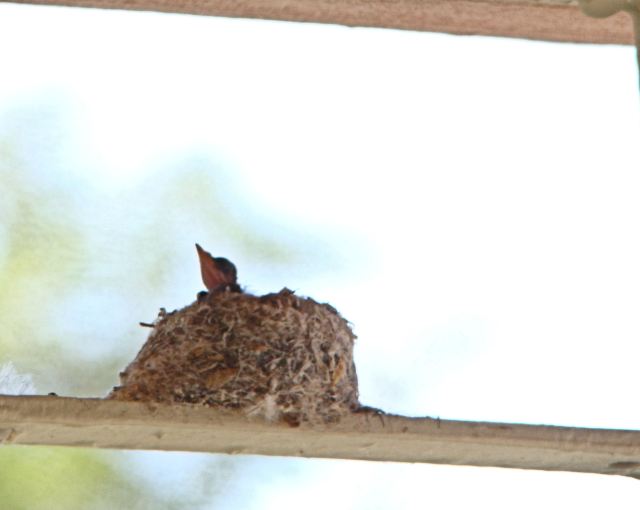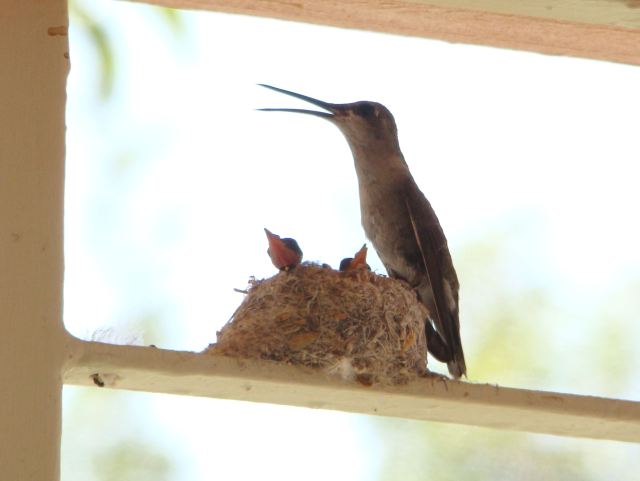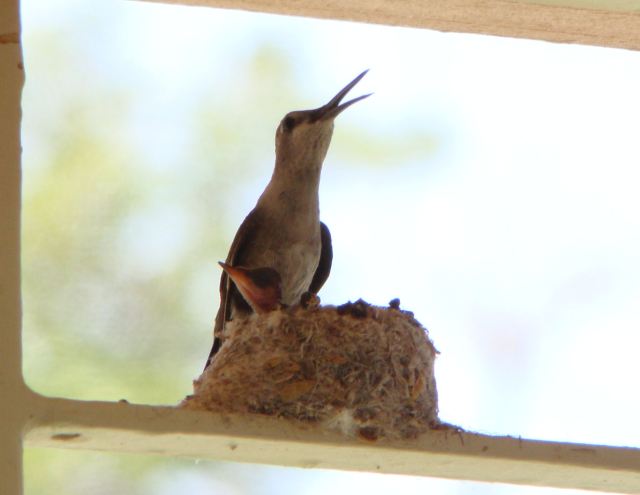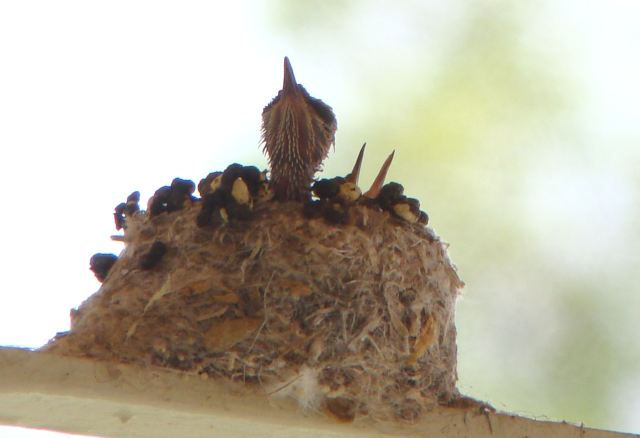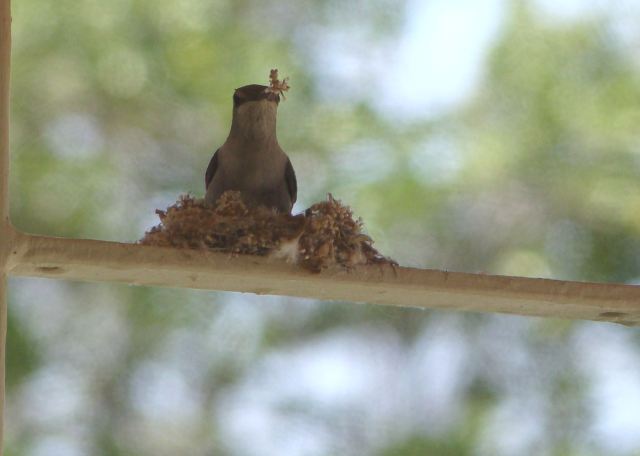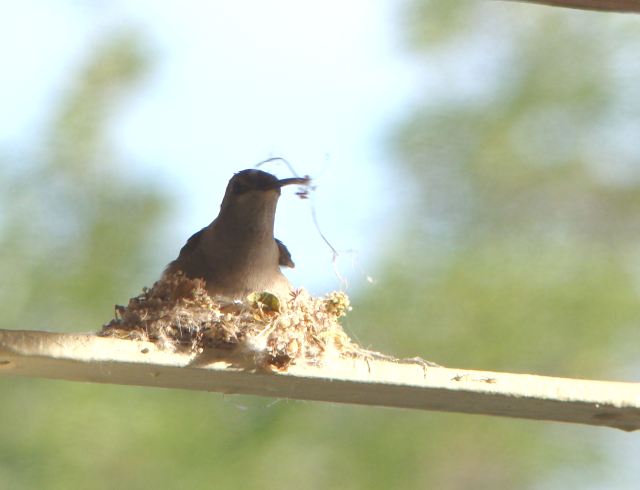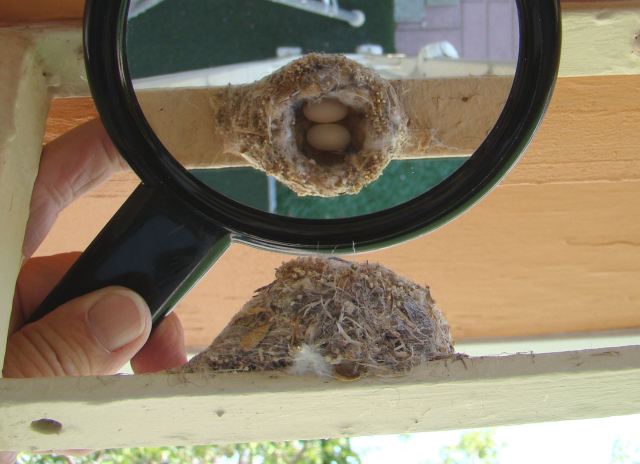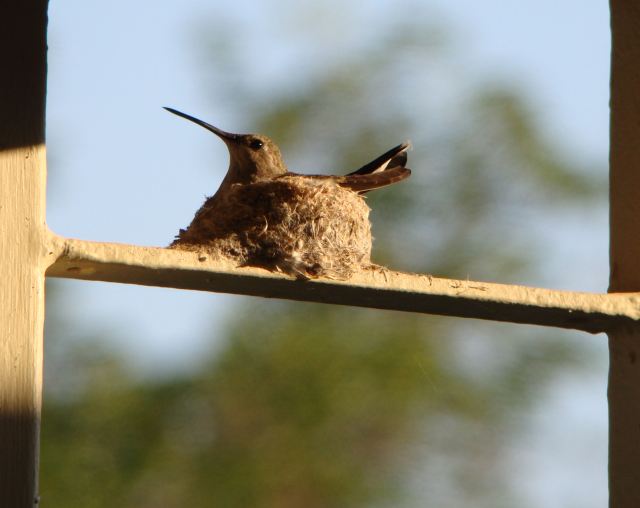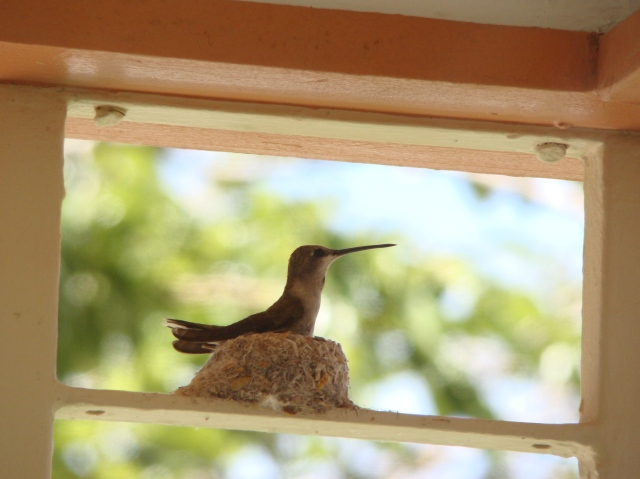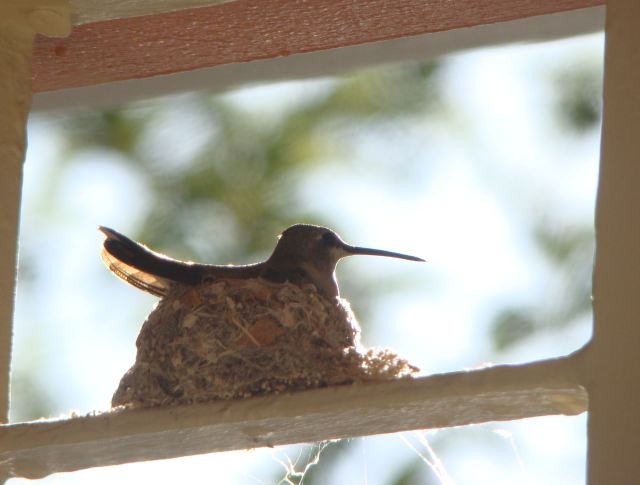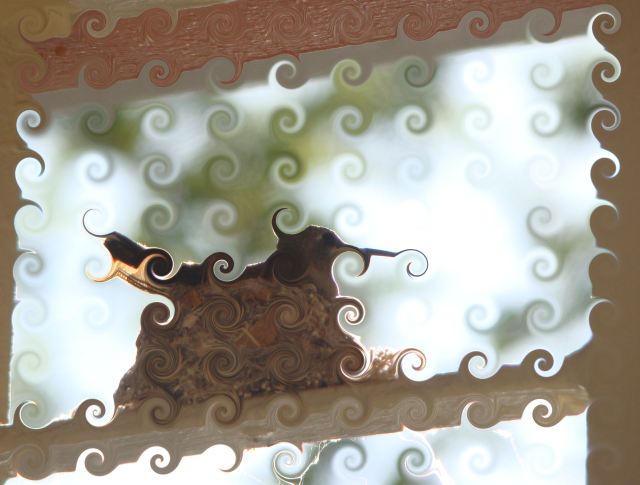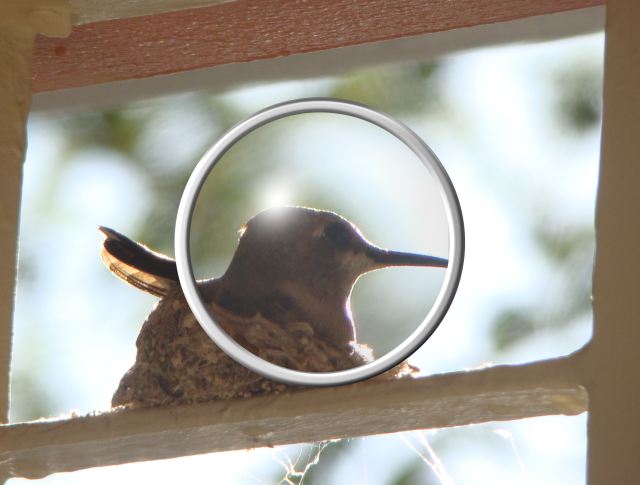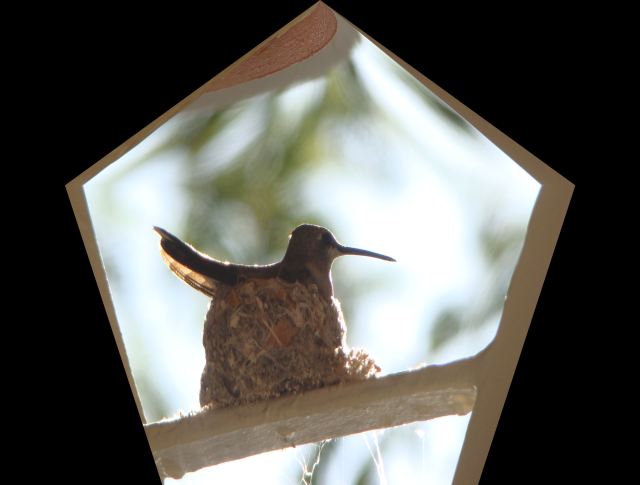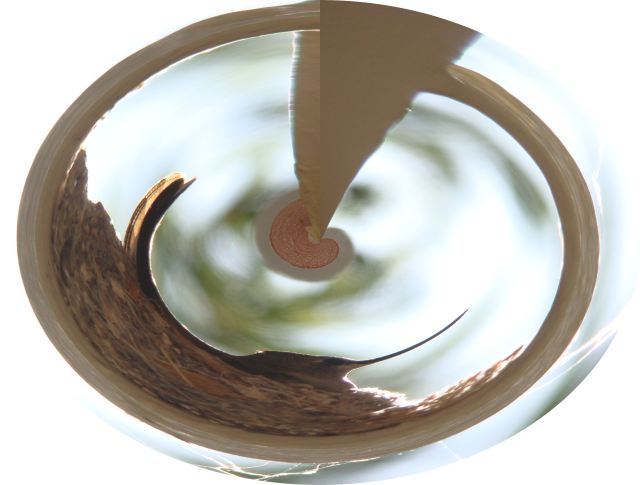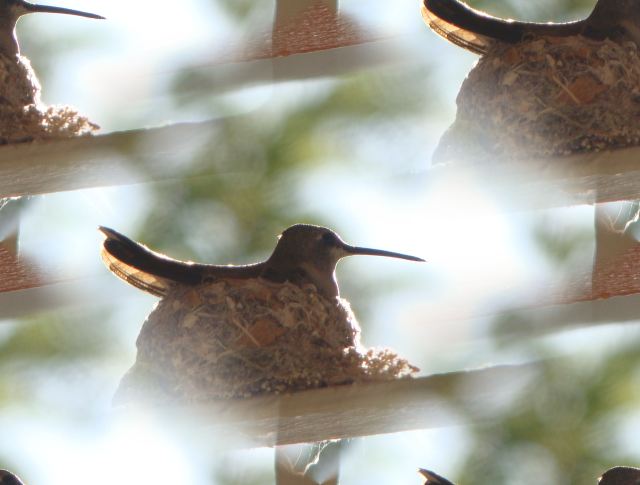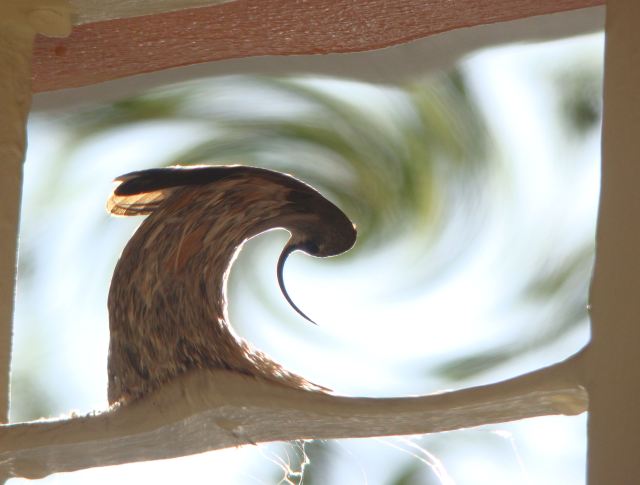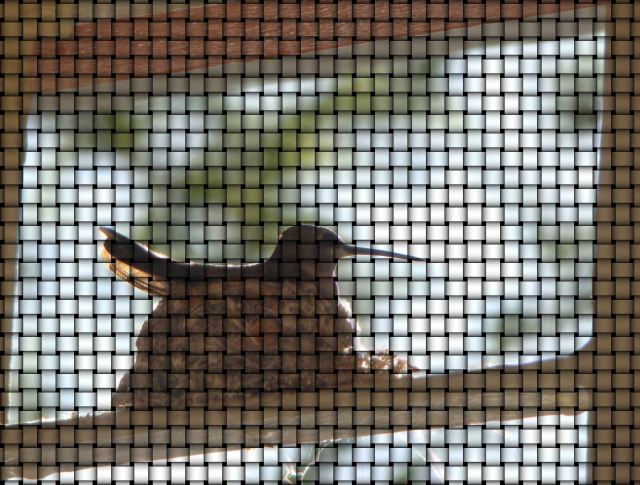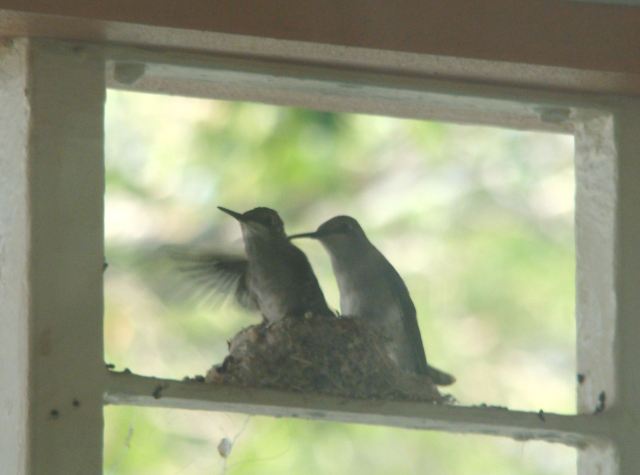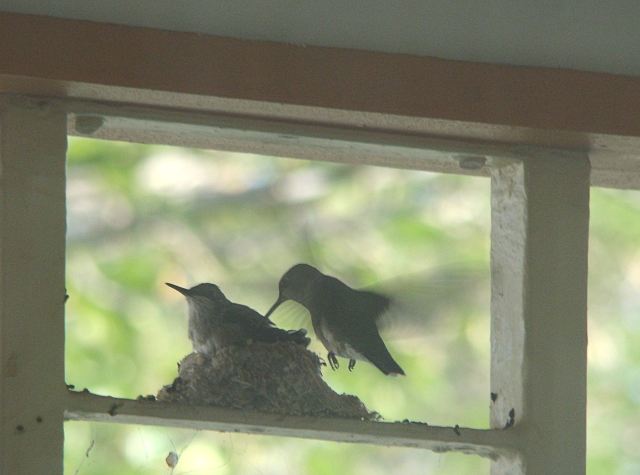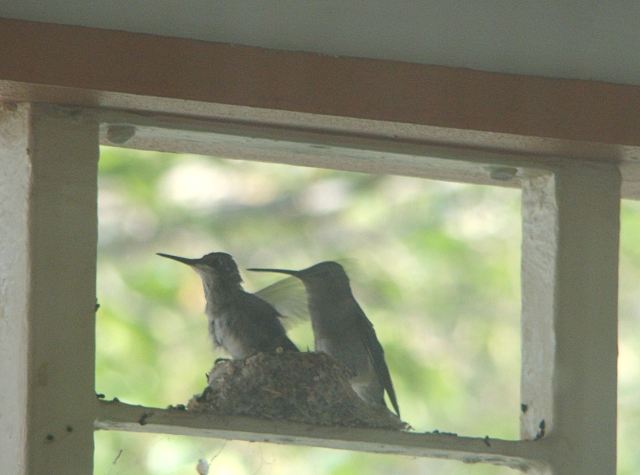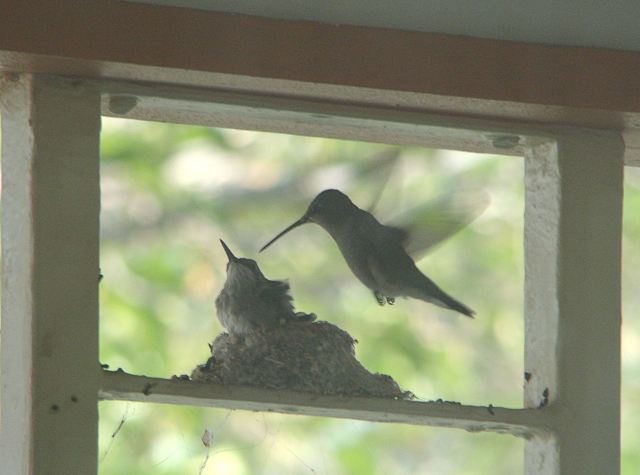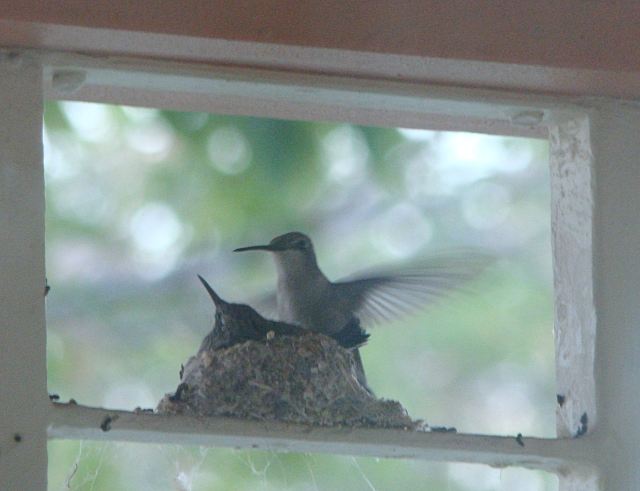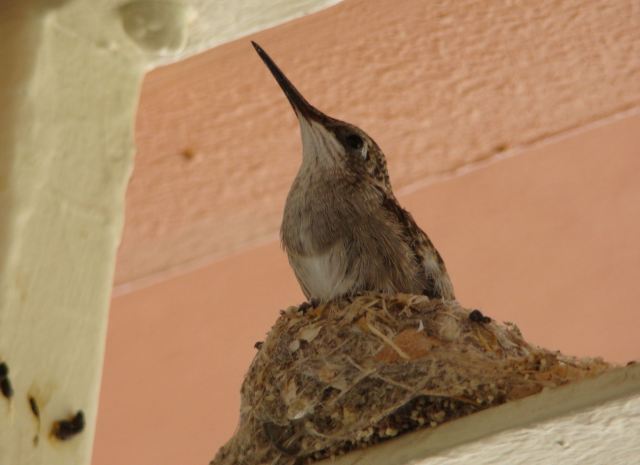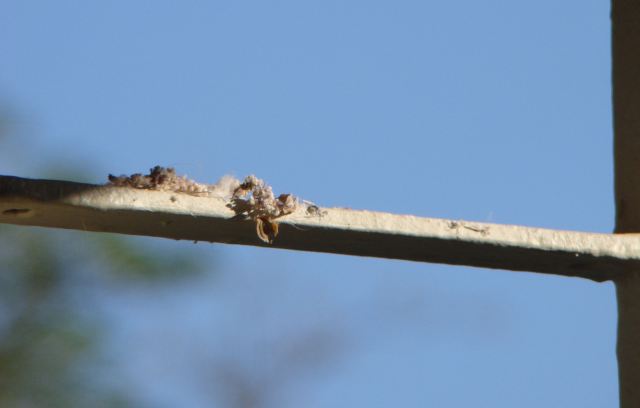A REMINDER: You’ve only to click on any photo if you wish to enlarge it.
RUFOUS HUMMINGBIRDS. I think the first three photos taken within seconds of each other contain some kind of neat and fun optical illusions. In the first, we see a female approaching the feeder where a male (and a wasp underneath) are already there. But WAIT — there’s something odd about her — it looks like she has a mini third wing! 
Now seconds later, the male has left; the wasp is still there; and she still has her mini third wing. With a bit of imagination, you can also see what looks like a vapor trail at an angle behind her.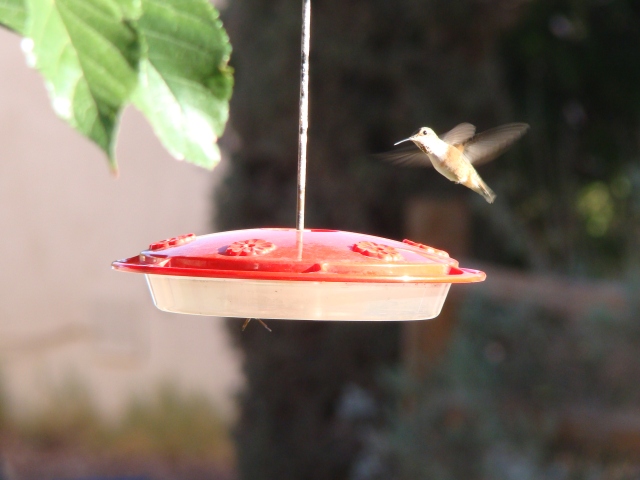
Now, the mini third wing is gone; the wasp is still there as is the imaginary vapor trail.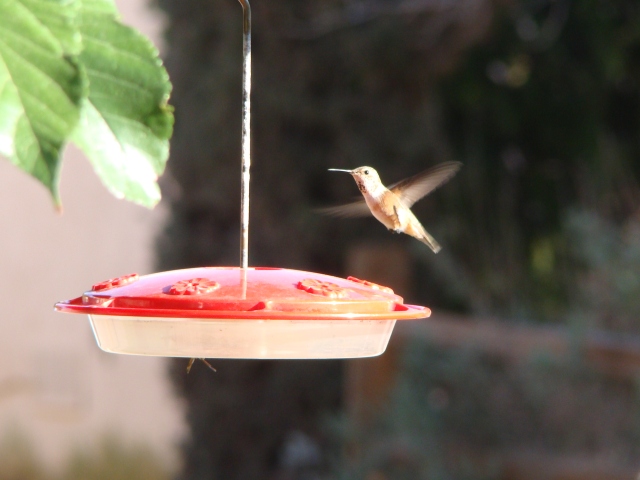
PIGEONS. I’m not terribly fond of pigeons due to their flocking behavior; however, I do find it interesting that unlike most bird species, they come in a wide variety of markings and colors. Here’s just a few examples of some I’ve seen in our yard.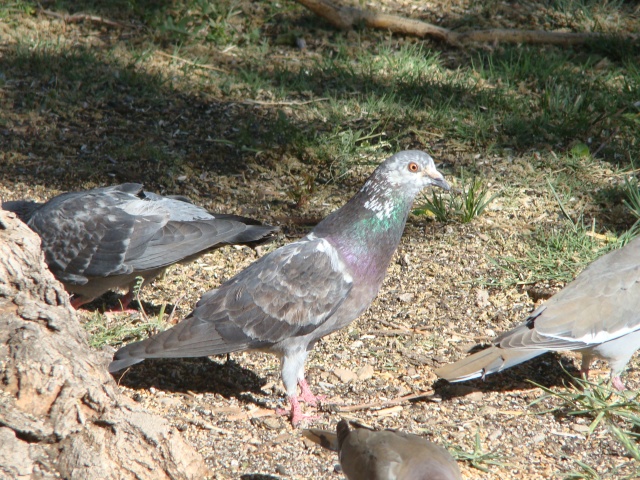
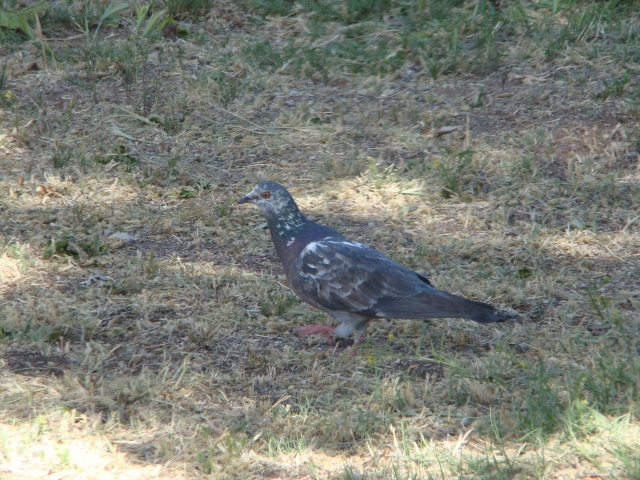
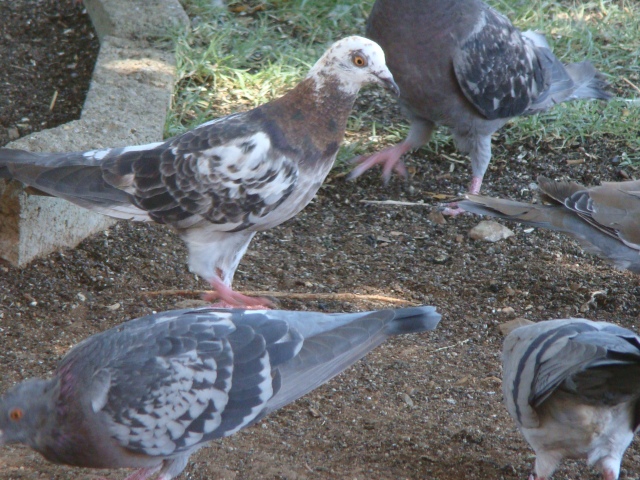
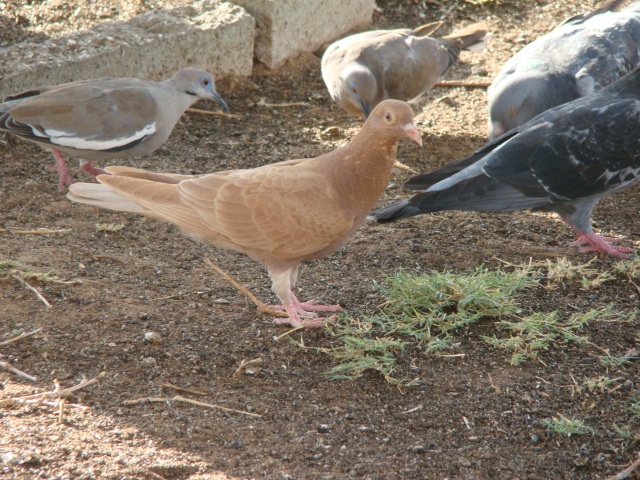 MORE HUMMINGBIRD SHOTS – BOTH RUFOUS AND BLACK-CHINNED. Notice the small ruby spot this first female Rufous has on her throat.
MORE HUMMINGBIRD SHOTS – BOTH RUFOUS AND BLACK-CHINNED. Notice the small ruby spot this first female Rufous has on her throat.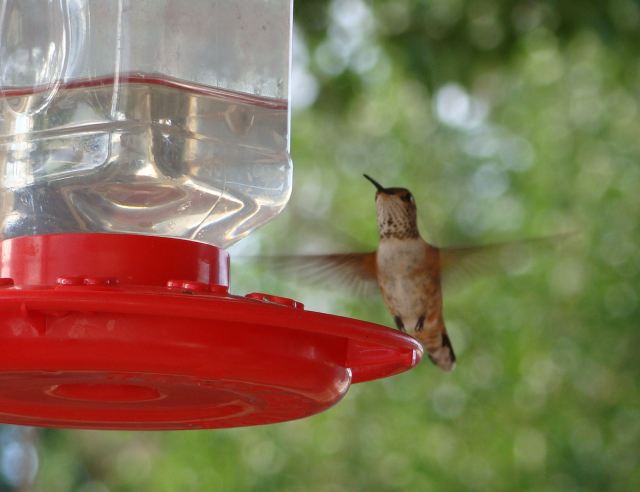
The male Rufous is very pretty especially in the right light.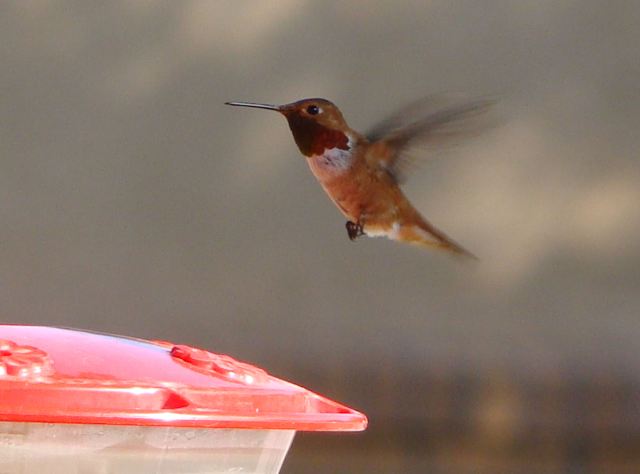
For several mornings in a row, I observed some STRANGE BEHAVIOR in a female Rufous hummingbird. She would sit for a few seconds on a bare tree branch, then fly out in a circular pattern and come back to once again sit on the branch (not always in the same place) only to repeat the maneuver over and over again. Of course, I took some photos of her, but found this particular one to be quite fascinating. In that light, she looks so dark almost like she has a mask on, but its the position of her head that caught my eye. I don’t remember ever seeing one turn its head around that far, but maybe you have.
As you know, the Black-Chinned Hummers nest here and usually show up in late March or early April; however, the Rufous Hummers are only migrating so come later and are not here as long. This male which I saw on July 26 was THE FIRST RUFOUS SPOTTED IN 2012.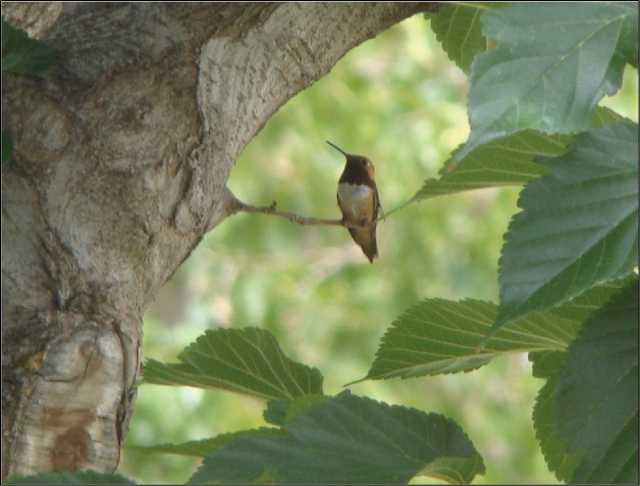
Next we have VARIOUS BIRDS SEEN ON 04 AUG 12 at daughter Joan and son-in-law Ed’s home North of town. The first one is a Black-Throated Sparrow – a bird I have never seen at our feeders. In case you are wondering, those are grape leaves you see to the right of the feeder.
Next are some shots of a bird I have seen only a couple times in our backyard — The Pyrrhuloxia (Cardinalis Sinuatus) or as we sometimes simply call it “The P Bird” (that’s easier to pronounce. LOL). It is a cousin of the Northern Cardinal we saw and loved so much when we lived in Ohio. This “P Bird” is a male as the female has little to no red coloring on them. The quail silhouette in the background is a lawn ornament, but adds a kind of neat touch to the photo.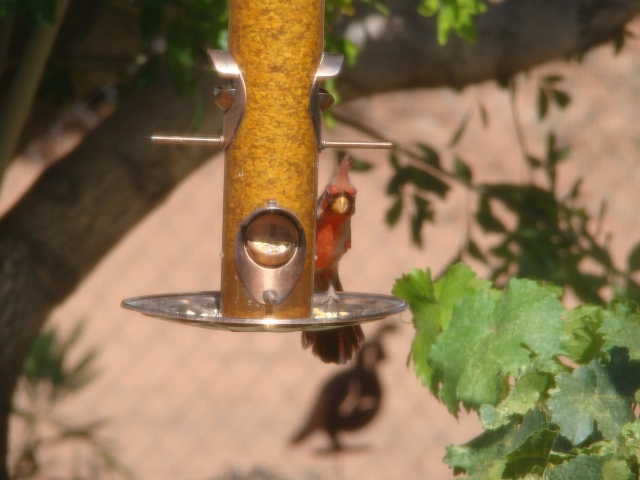
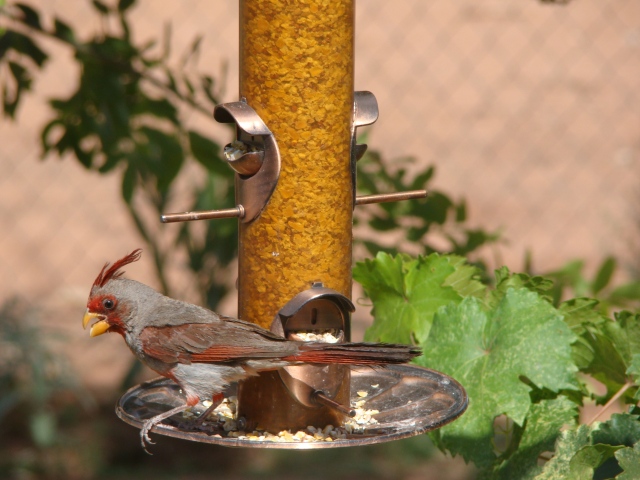 This next photo of a Western Kingbird also taken the same day and same place is not the best in composition and not so good to have the branch in front of his face. I like it anyway. It’s a pretty bird, but I guess it’s also because of the blurred background of a cloudy blue sky and the foothills in silhouette.
This next photo of a Western Kingbird also taken the same day and same place is not the best in composition and not so good to have the branch in front of his face. I like it anyway. It’s a pretty bird, but I guess it’s also because of the blurred background of a cloudy blue sky and the foothills in silhouette.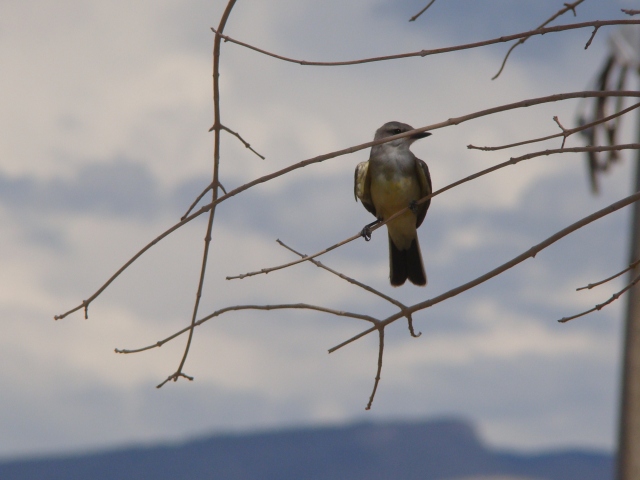
I usually have to get my bird shots at a distance and through glass besides being a bit “sneaky”. I decided to try a new tactic for the hummers – up close to the feeder, but MAKING LIKE A STATUE. About the time I thought it wasn’t going to work and my arms would fall off from holding the camera up so long, it paid off!! Here came this lovely little female Black-Chinned Hummingbird. The pollen on her bill tells us that she was visiting some flowers before she came to the feeder.
Using this same tactic, I caught a female Rufous Hummer. We also know where she’s been before coming to the feeder — notice the leftover bit of some small insect on her bill.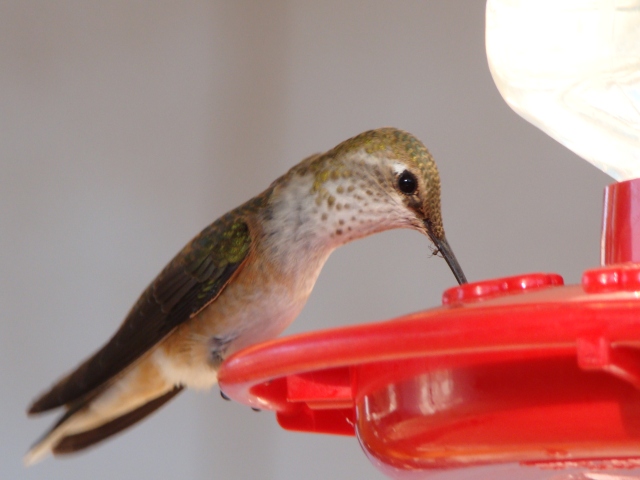
A QUAIL TALE. When I at first looked out one day in March 2012, I thought there were no birds in the yard. Then something caught my eye — a male Gambel’s Quail standing absolutely stock-still with his head turned to one side. Now, this was very strange as quail are rarely still nor do you usually see just one since they mate for life and also form coveys part of the year. I continued to watch him for several minutes.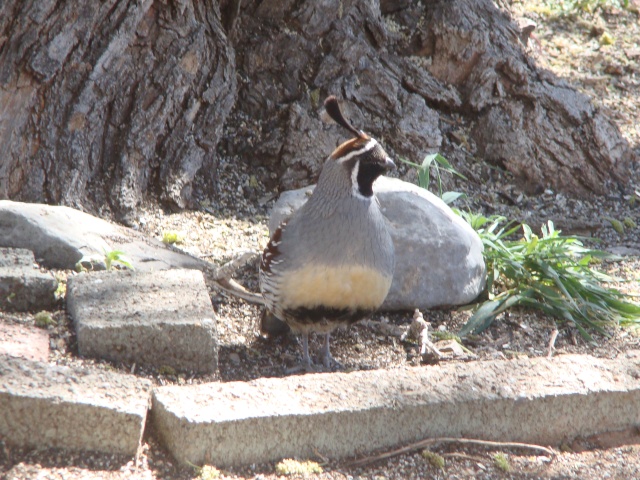 Most of the time, he was looking to the side, but once in a while he would look toward me for a while.
Most of the time, he was looking to the side, but once in a while he would look toward me for a while.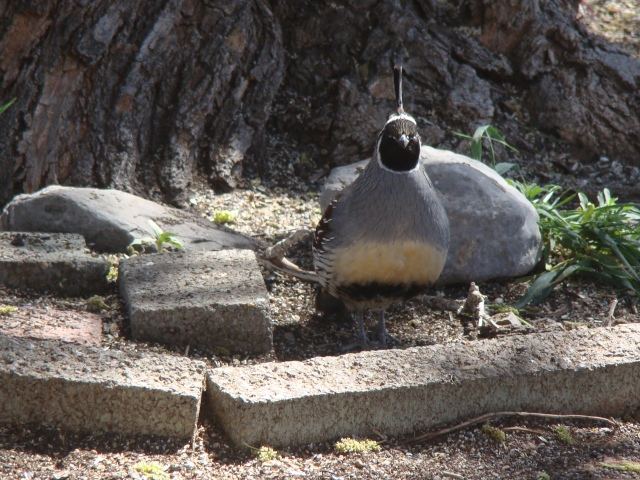 And then back to the side again.
And then back to the side again. This went on for a number of minutes and then the female showed up. Now, I thought that was sweet of him being so vigilant and concerned about her whereabouts and safety perhaps. As soon as she came into the yard, he broke out of his stance and began feeding.
This went on for a number of minutes and then the female showed up. Now, I thought that was sweet of him being so vigilant and concerned about her whereabouts and safety perhaps. As soon as she came into the yard, he broke out of his stance and began feeding.
- The female enters the yard.
I wanted to take some photos of them together, but she had gone behind the tree so thought I would wait until she came into view again. WELL, TURNS OUT I WASN’T THE ONLY ONE WAITING FOR HER TO COME INTO VIEW. When she did, he took off like a flash and mounted her. 
- He was on her in a flash!
It was over very quickly and she went on about her foraging as if nothing happened.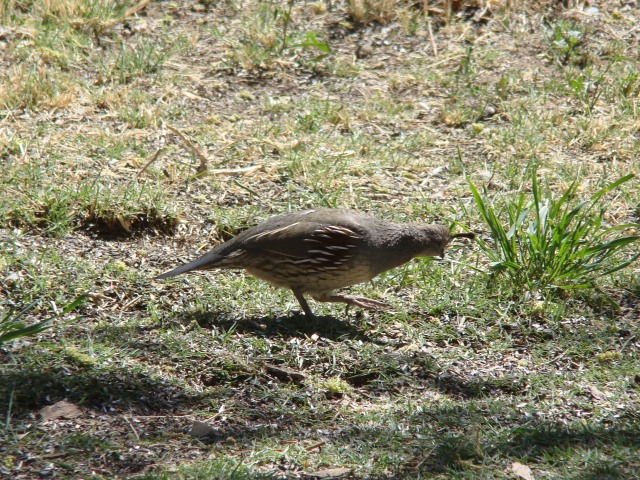
He flew up to the top of the wall to strut back and forth some — no worse for wear except a few ruffled feathers. He seemed quite proud of himself.
 Shortly they both left the yard and headed up the alley. Sadly, I never saw any results from this mating — too many loose pets in the neighborhood or perhaps hawks or who knows?? Hopefully, they just simply moved on to a different location.
Shortly they both left the yard and headed up the alley. Sadly, I never saw any results from this mating — too many loose pets in the neighborhood or perhaps hawks or who knows?? Hopefully, they just simply moved on to a different location.
THE AMERICAN KESTREL is a small falcon — sometimes called a Sparrow Hawk. In fact, it is the smallest of our falcons. They can be seen at times hovering over prey before plunging in for the kill. They feed on insects, small reptiles and mammals, and sometimes birds. I had only seen any of them here at the house once before. That sighting was kind of neat as I had gone out onto the porch for something and sort of felt eyes on me. I looked over toward the garage only to see a Kestrel peering over the edge of the garage roof at me. Of course, there was no chance to run for the camera as it quickly flew away.
Imagine my surprise to look out back on New Years Day 2013 only to see an American Kestrel devouring a bird. It didn’t stay long after that as it was almost finished with its meal. There was little left of the bird, but think his dinner might have been an inca dove. What a beauty he is — even if he did have a bit of telltale blood on his bill.
Well, there you have this entry. I have two or three more from 2012 I need to post to get caught up. ENJOY!! 🙂

